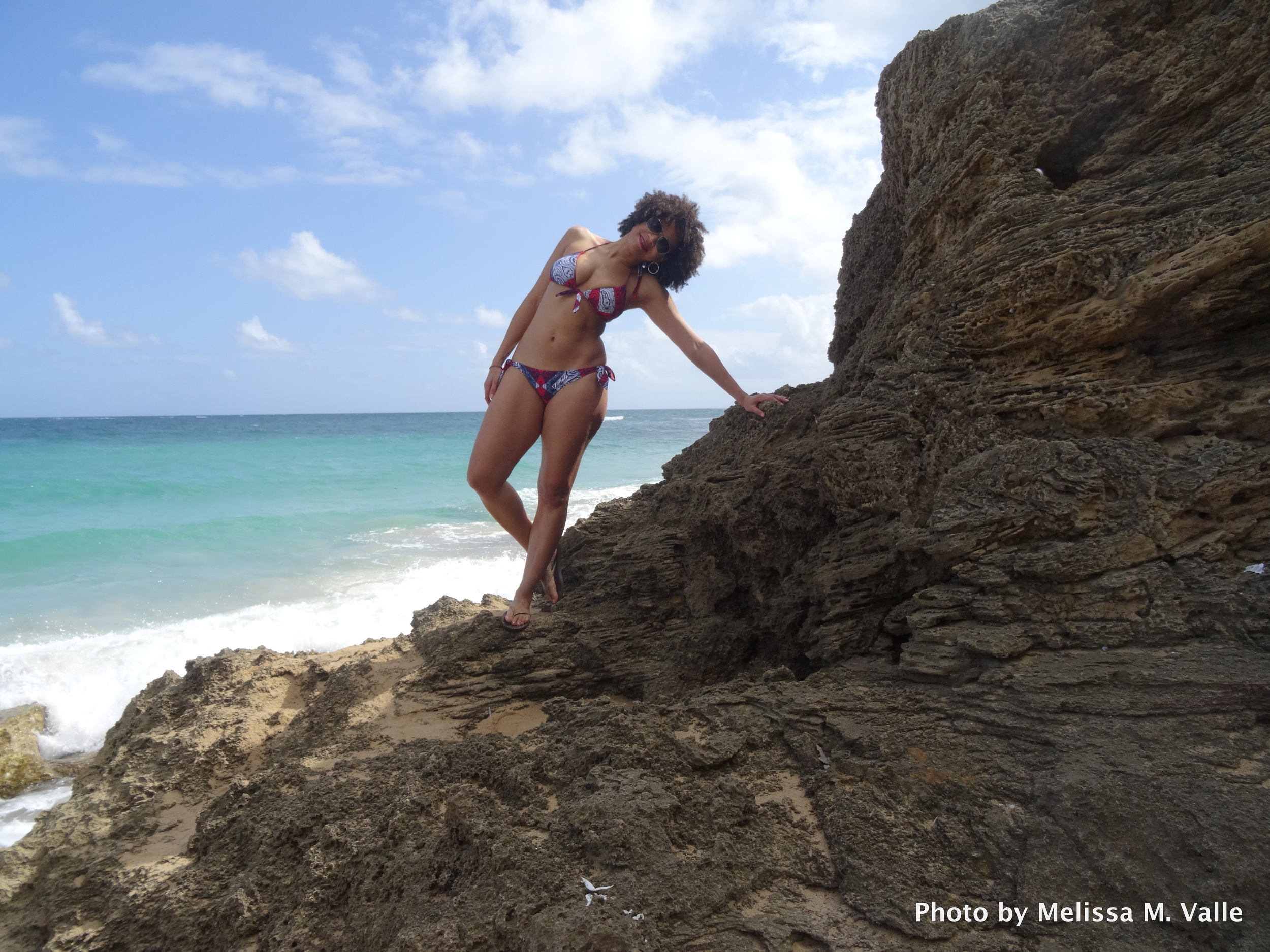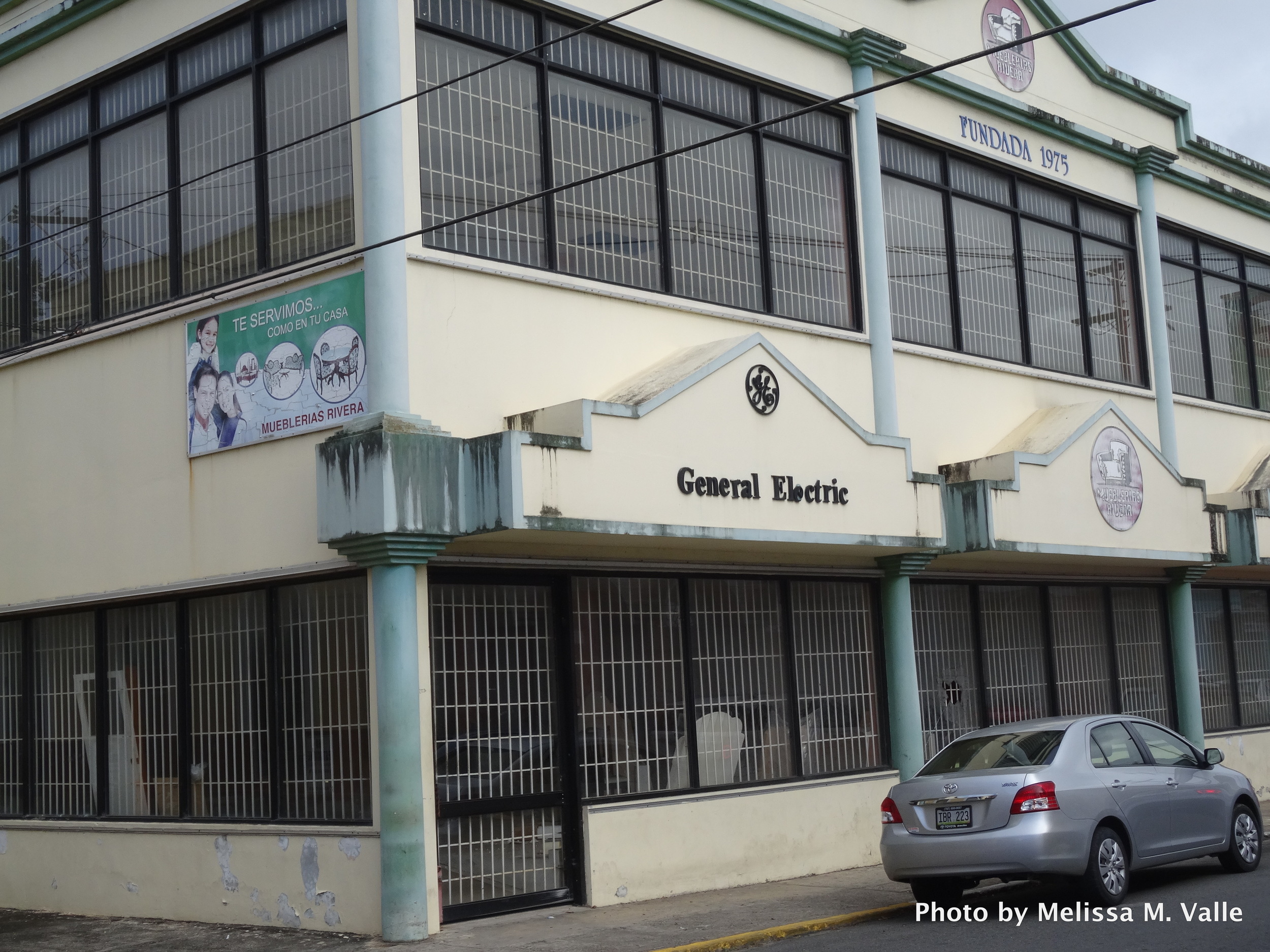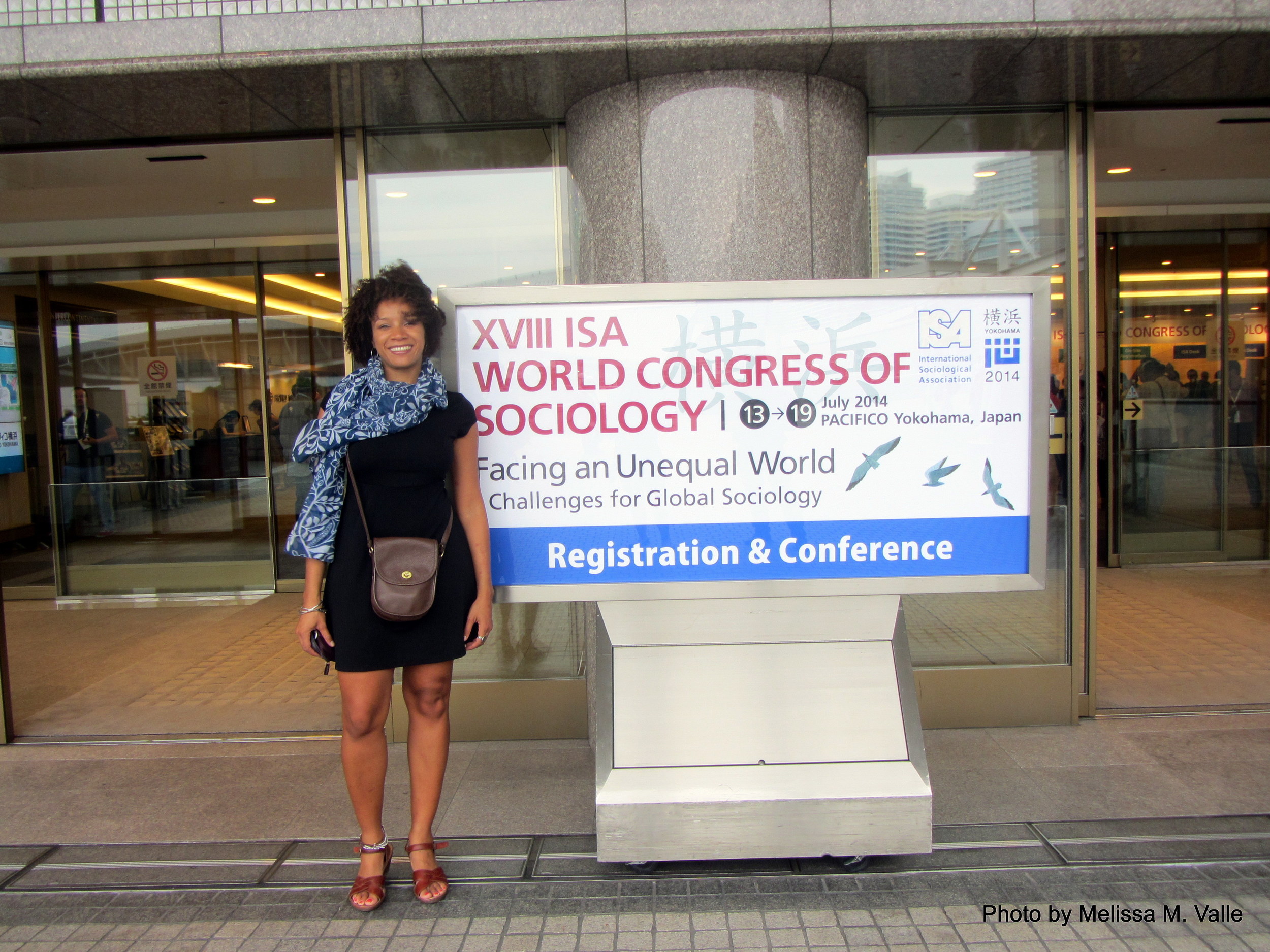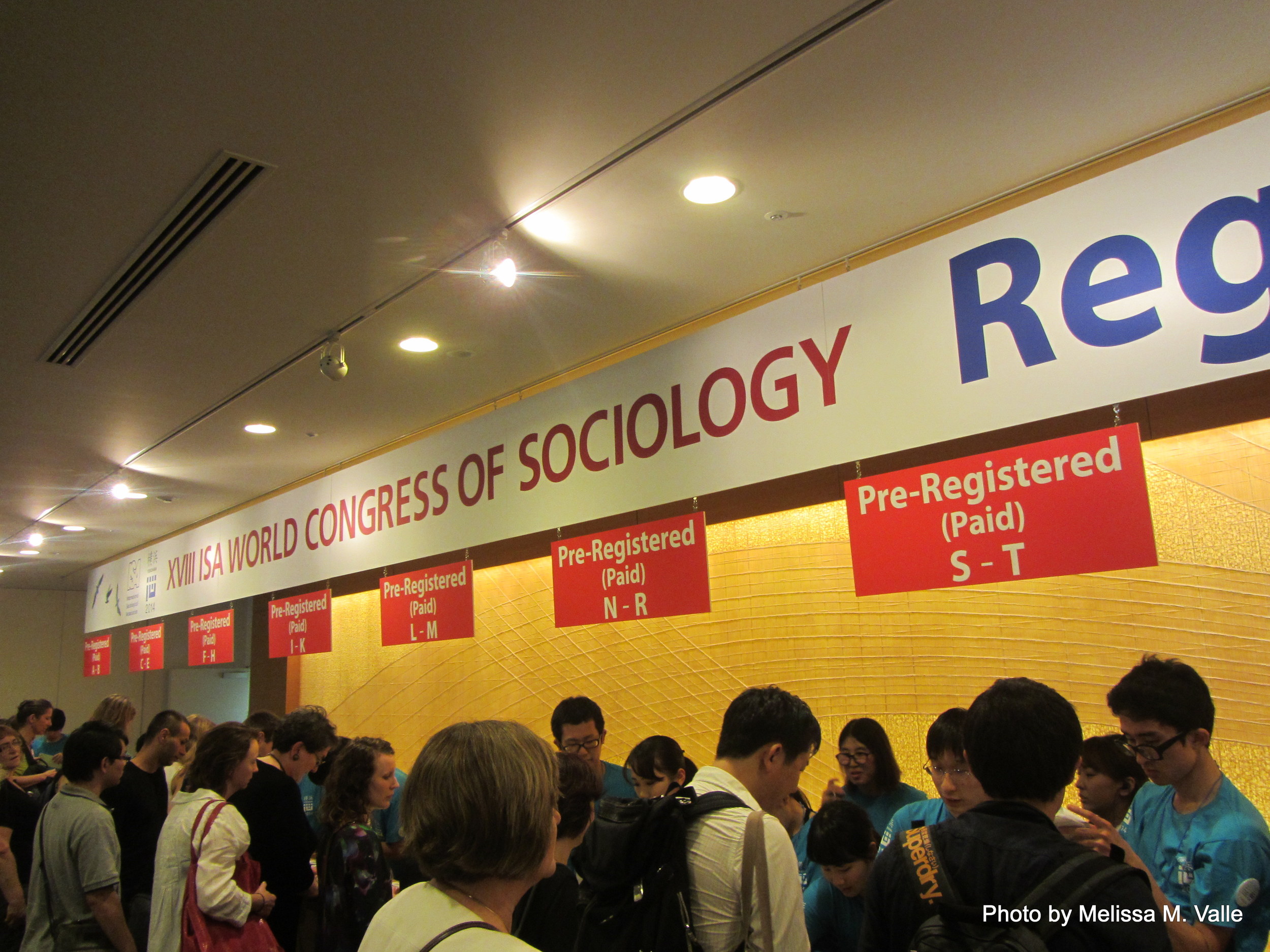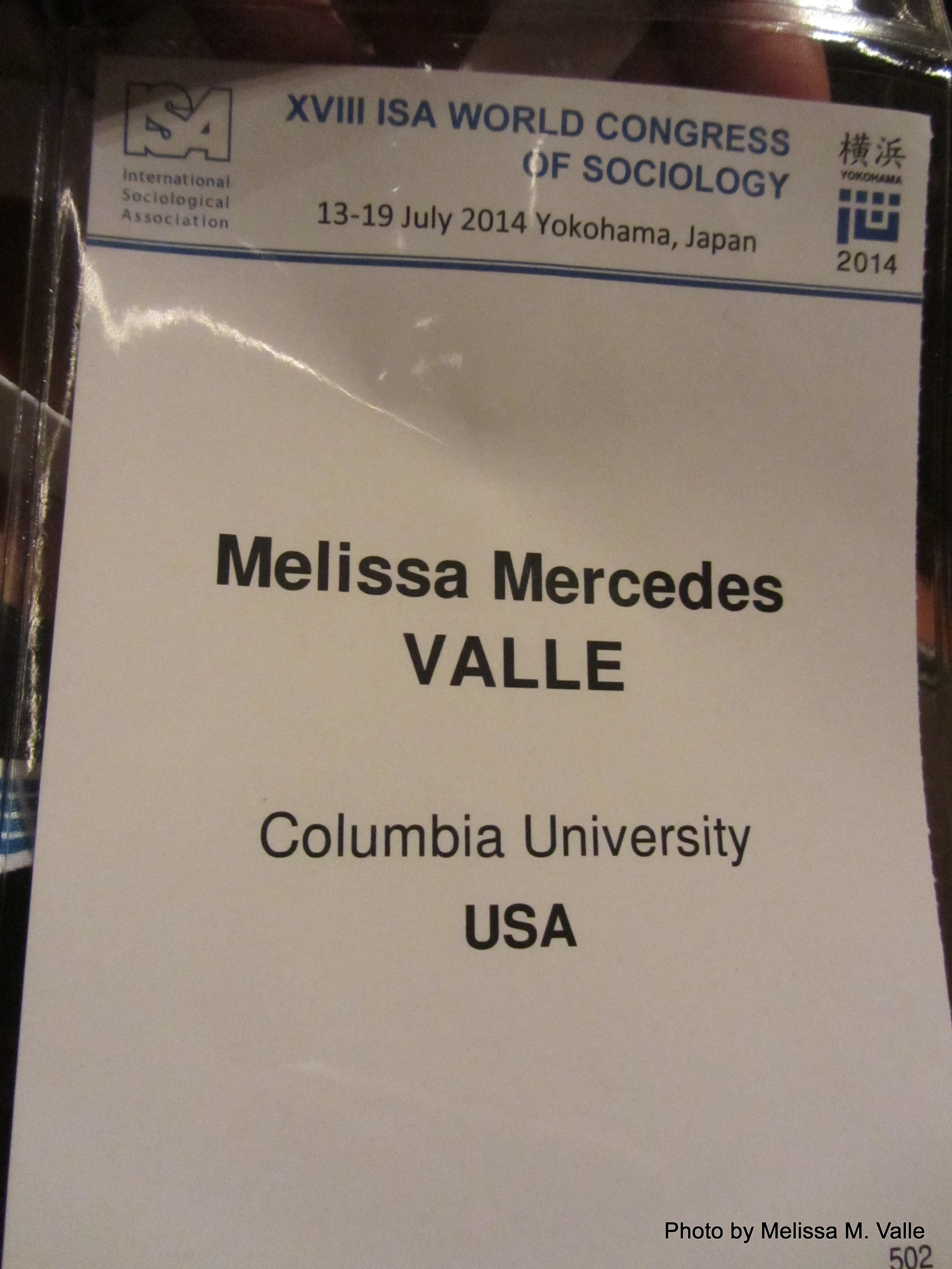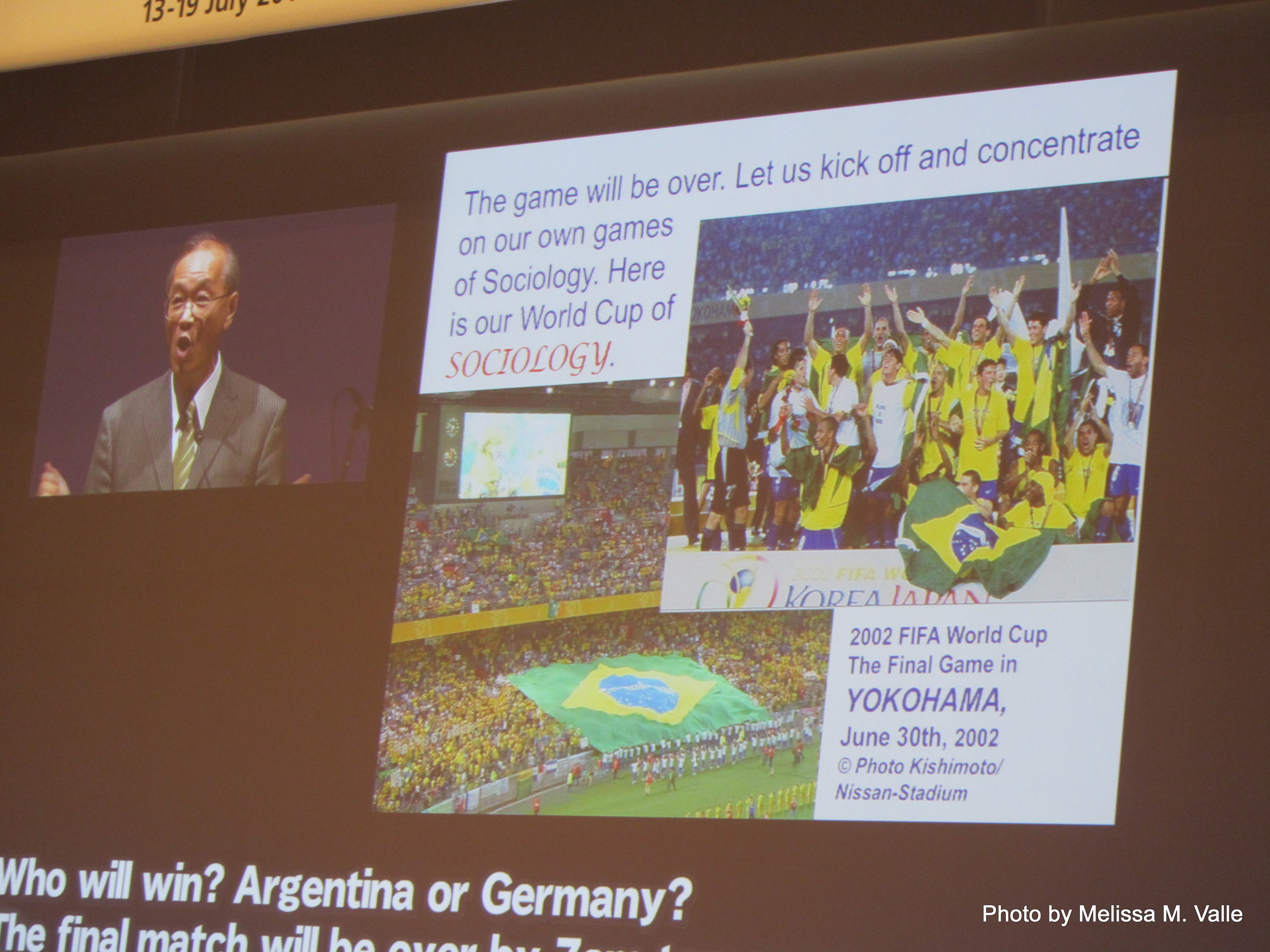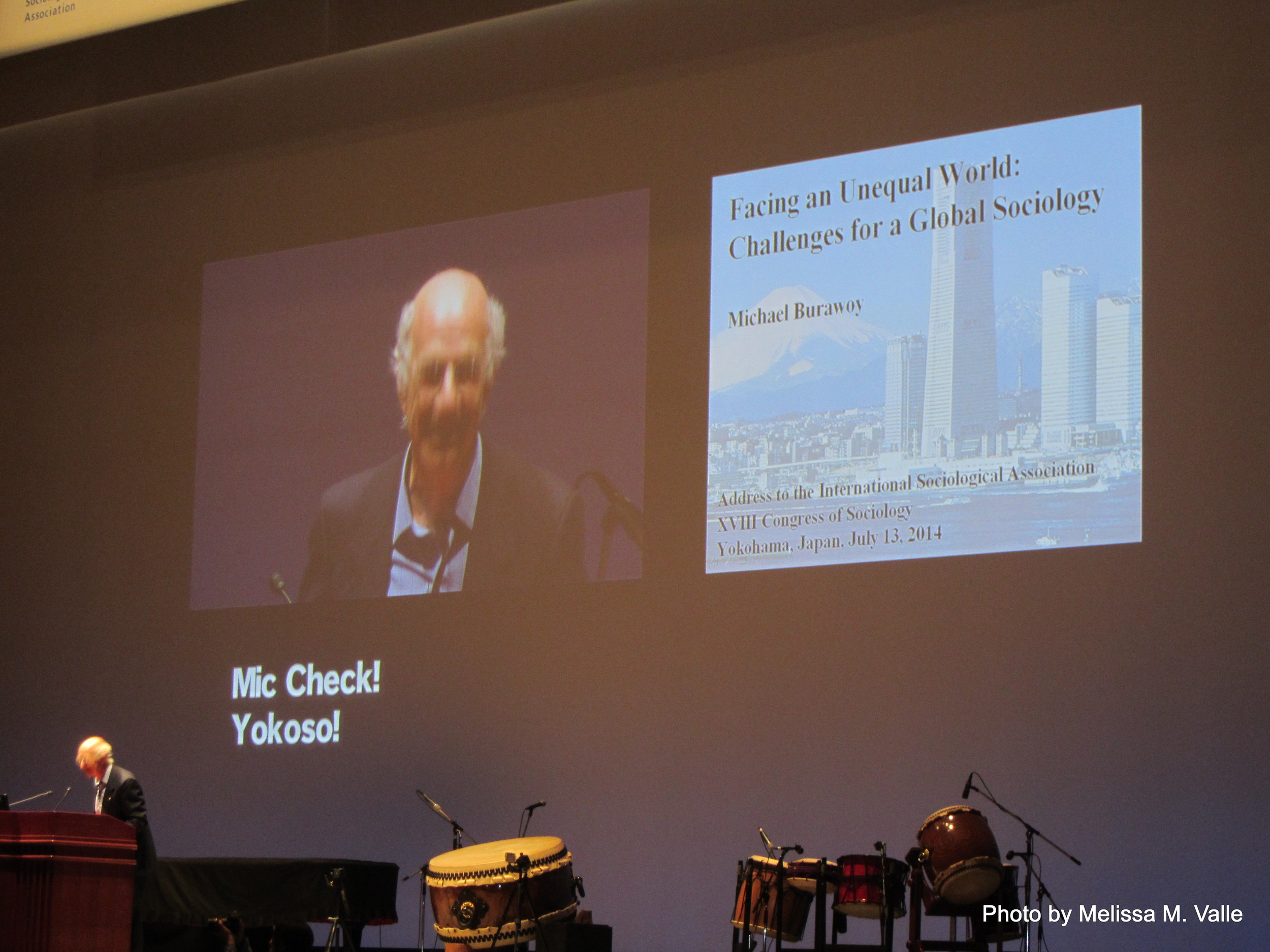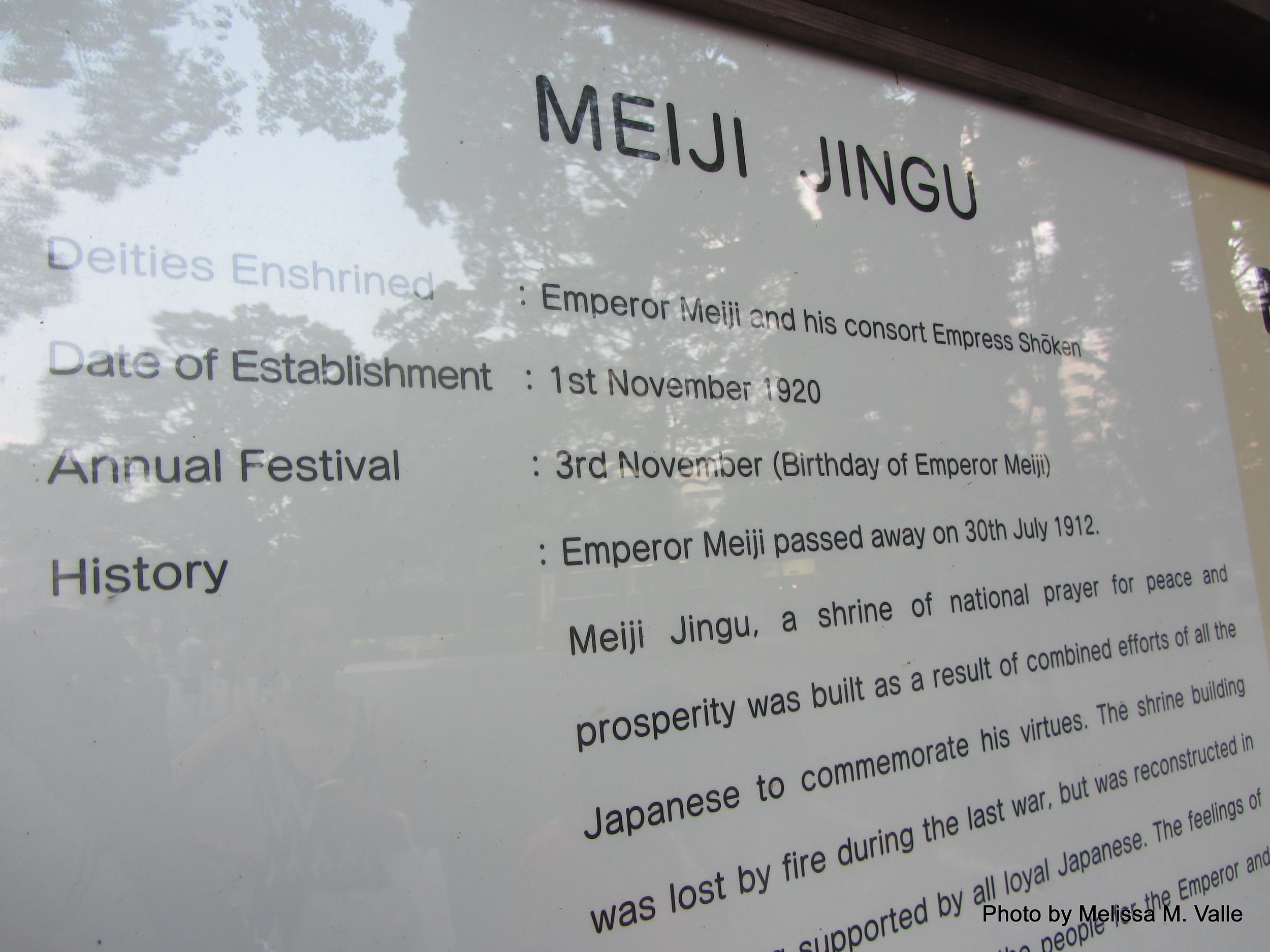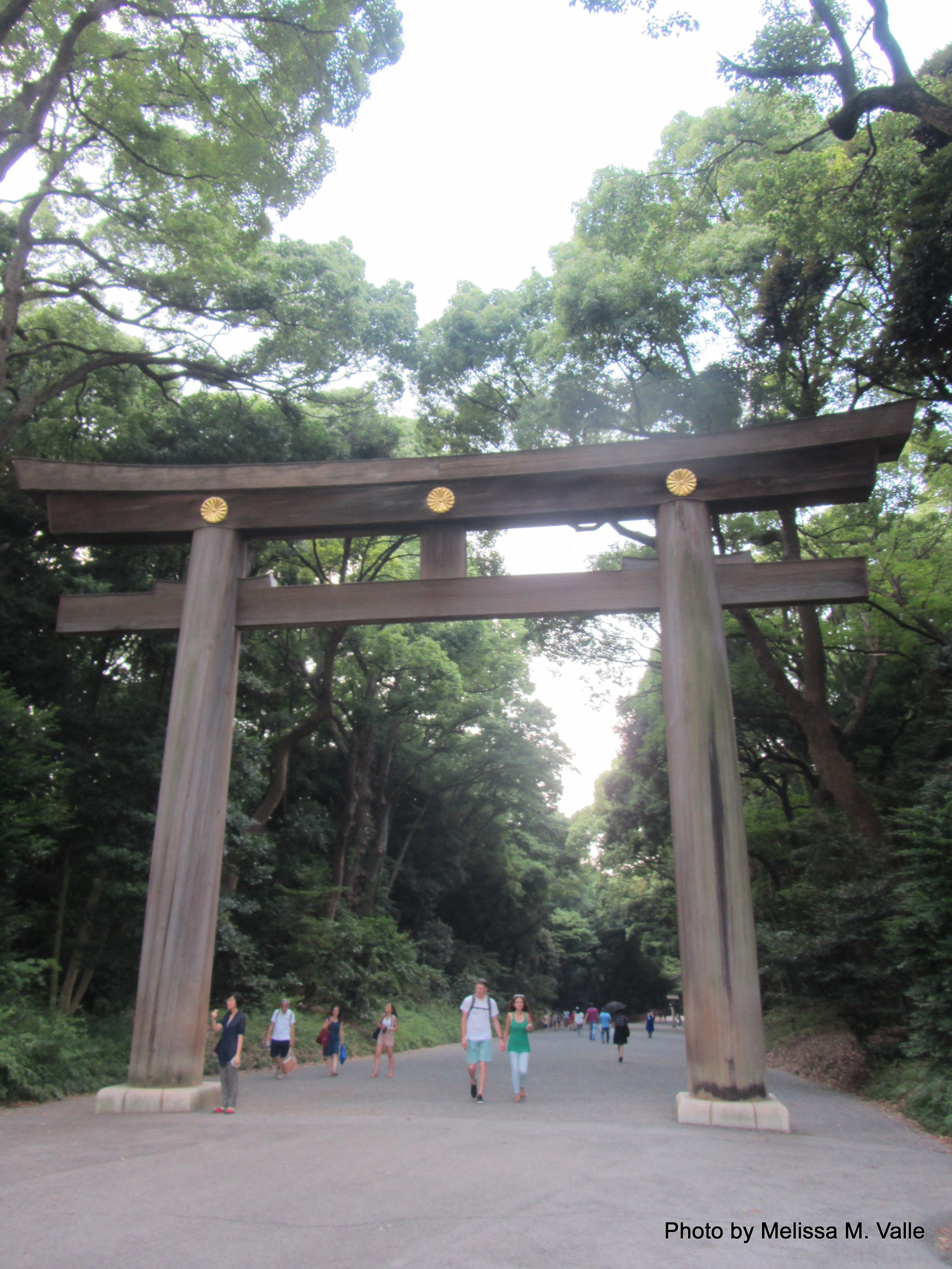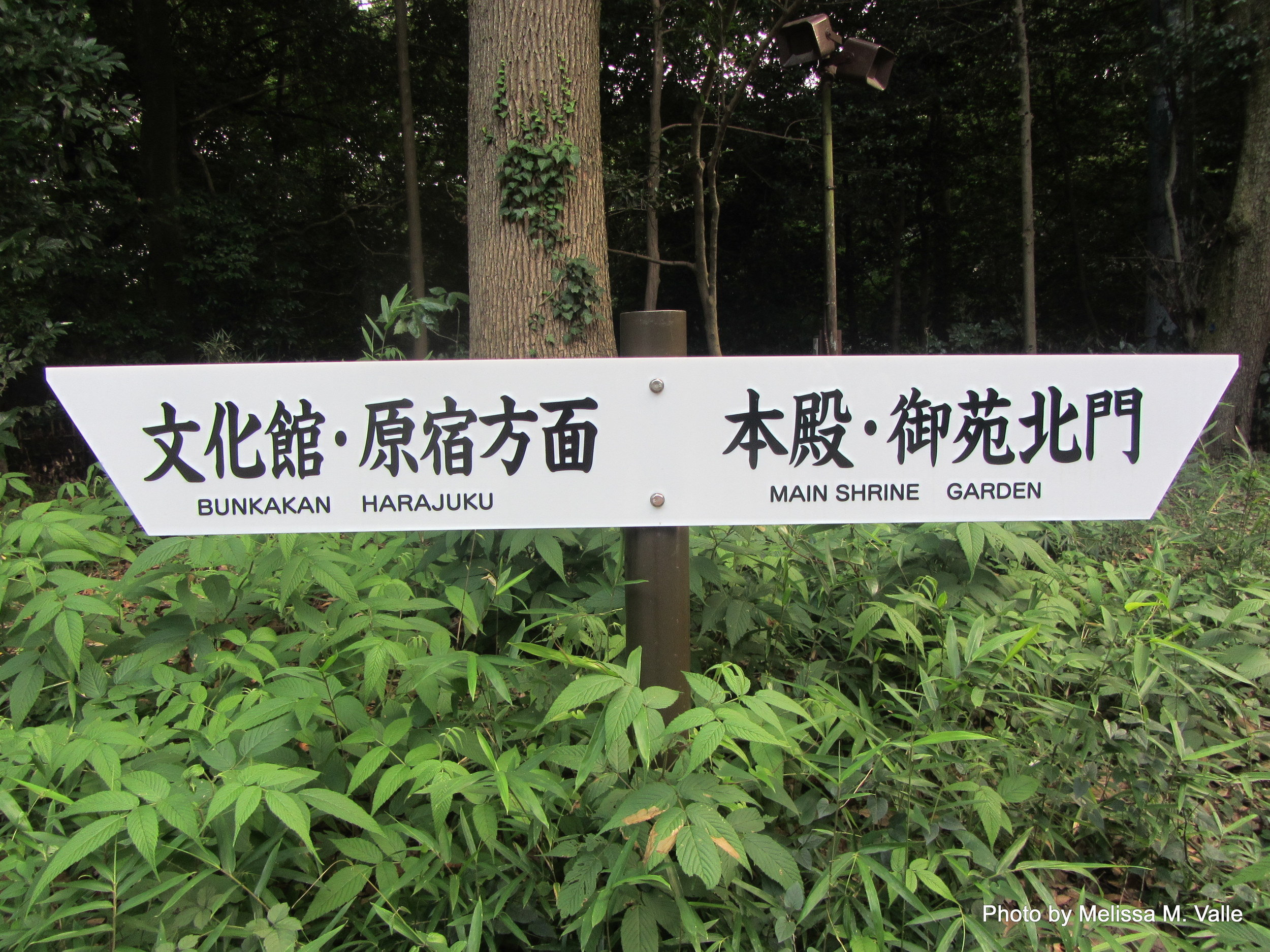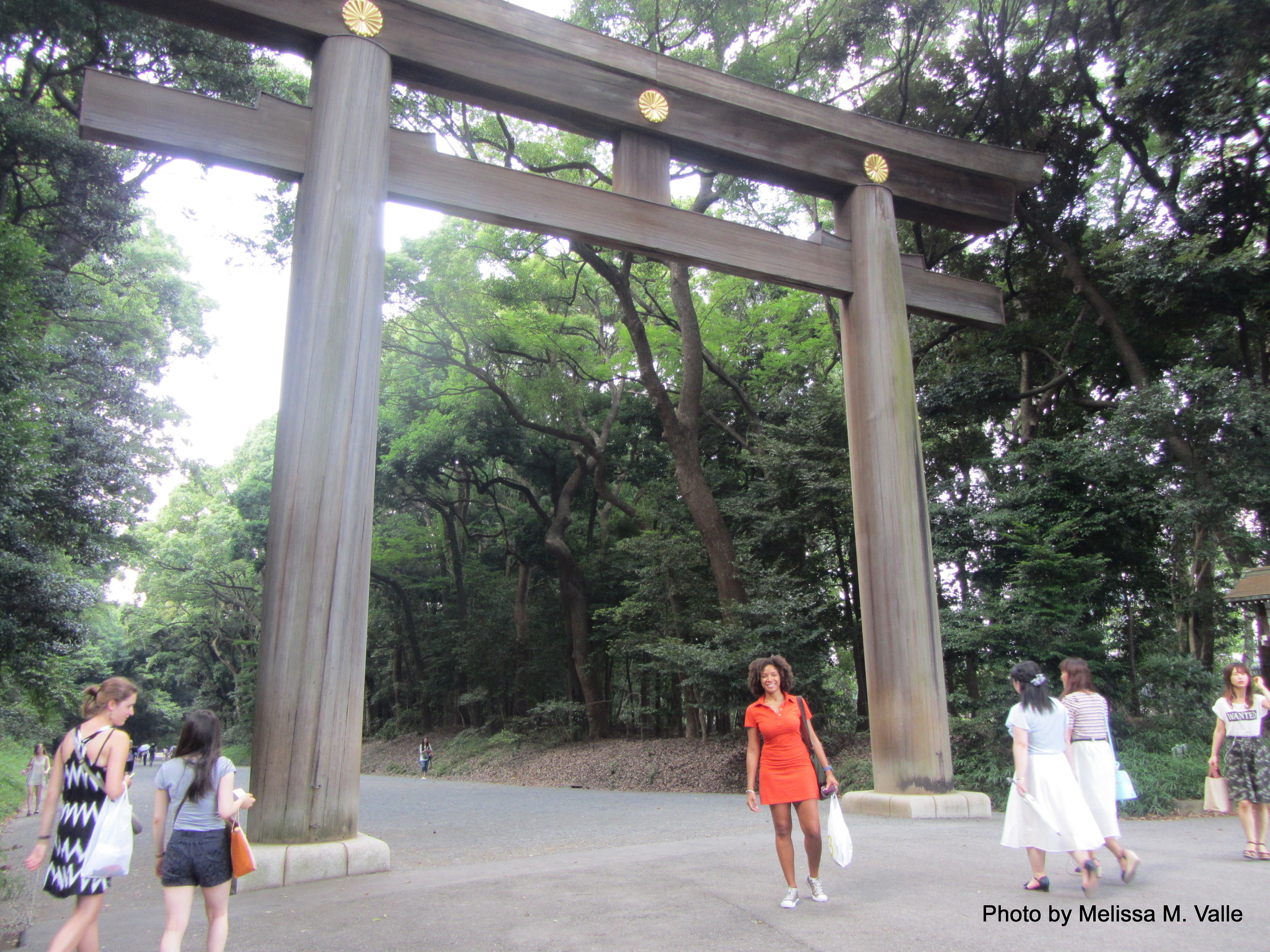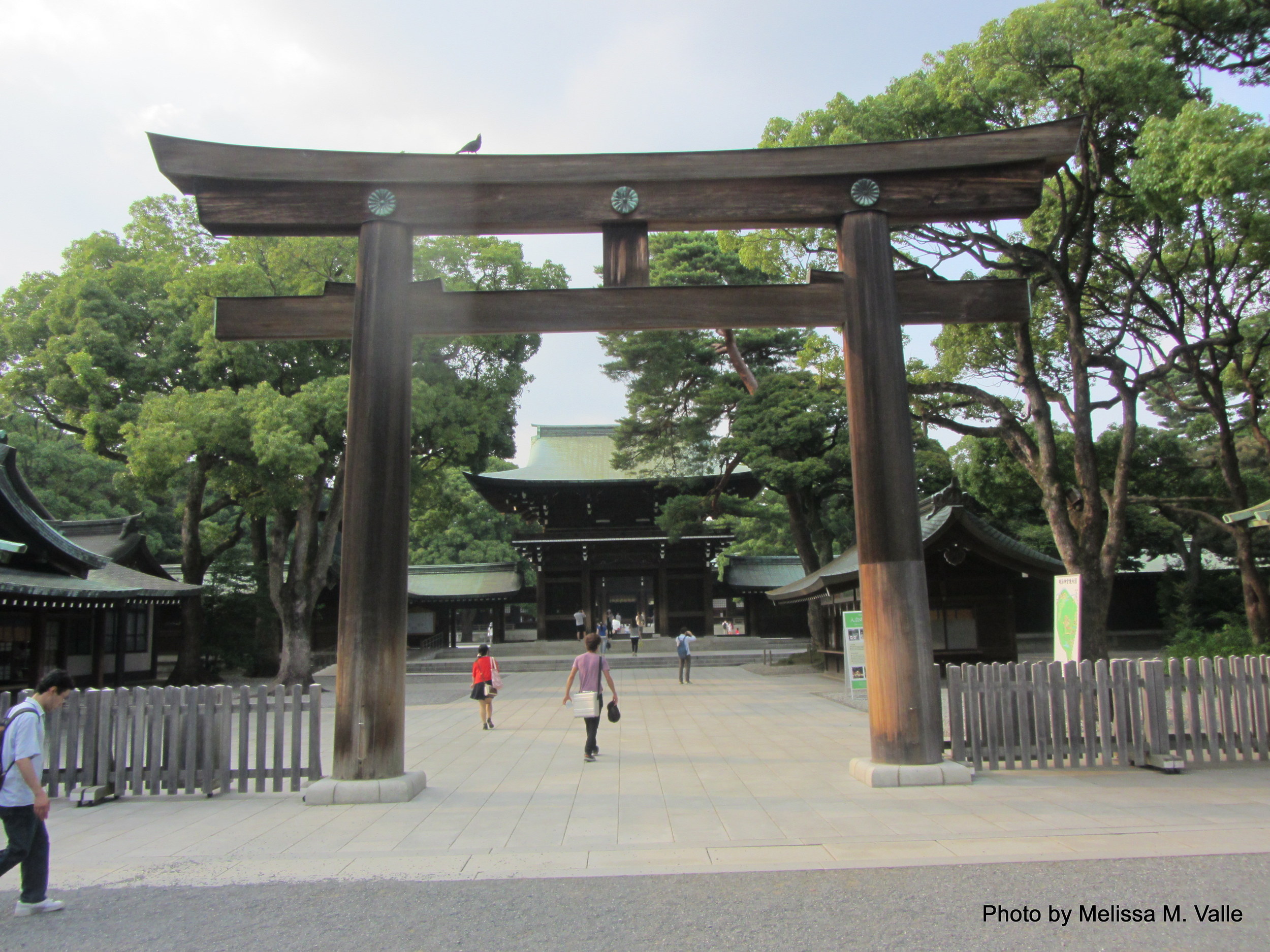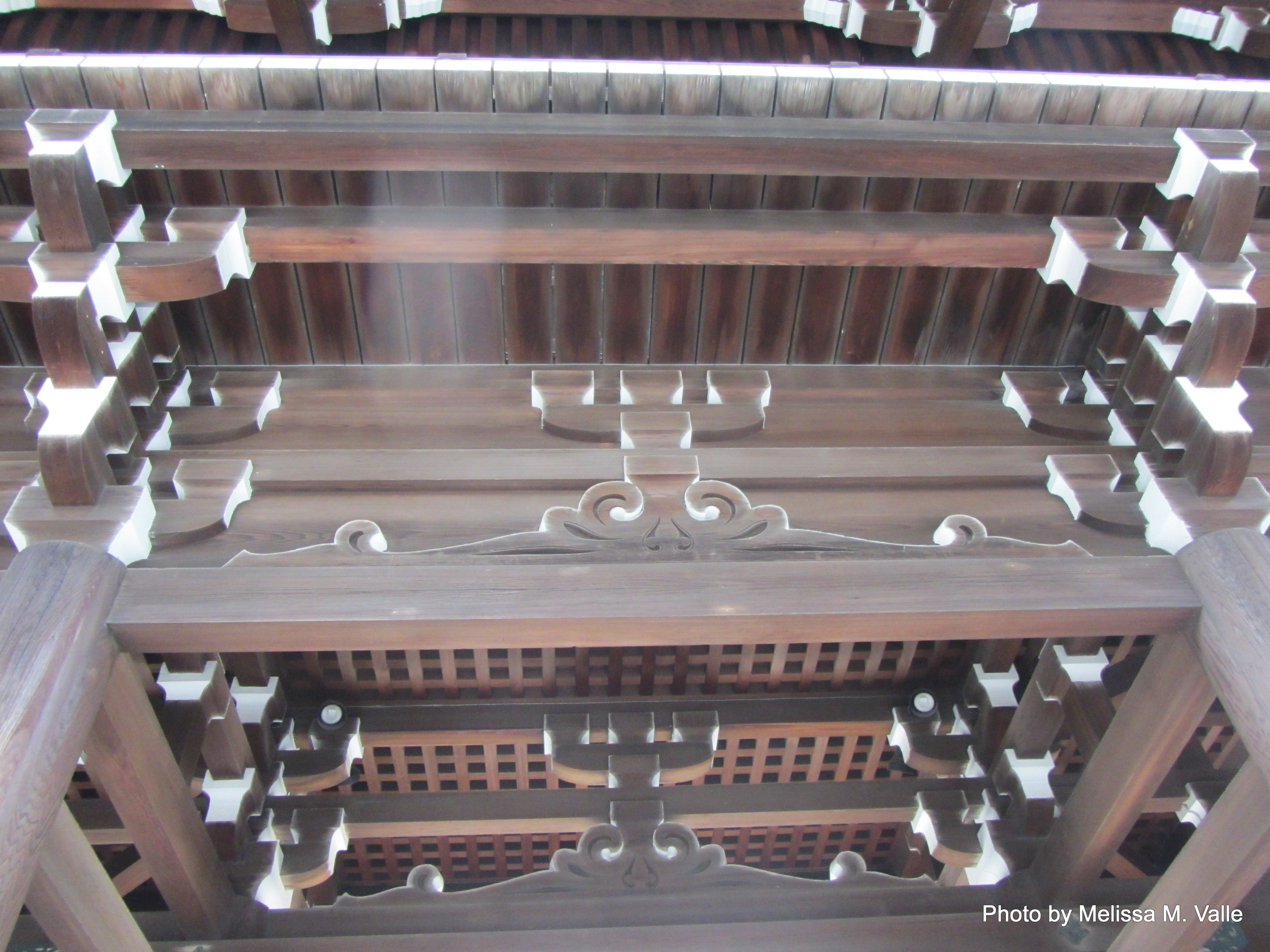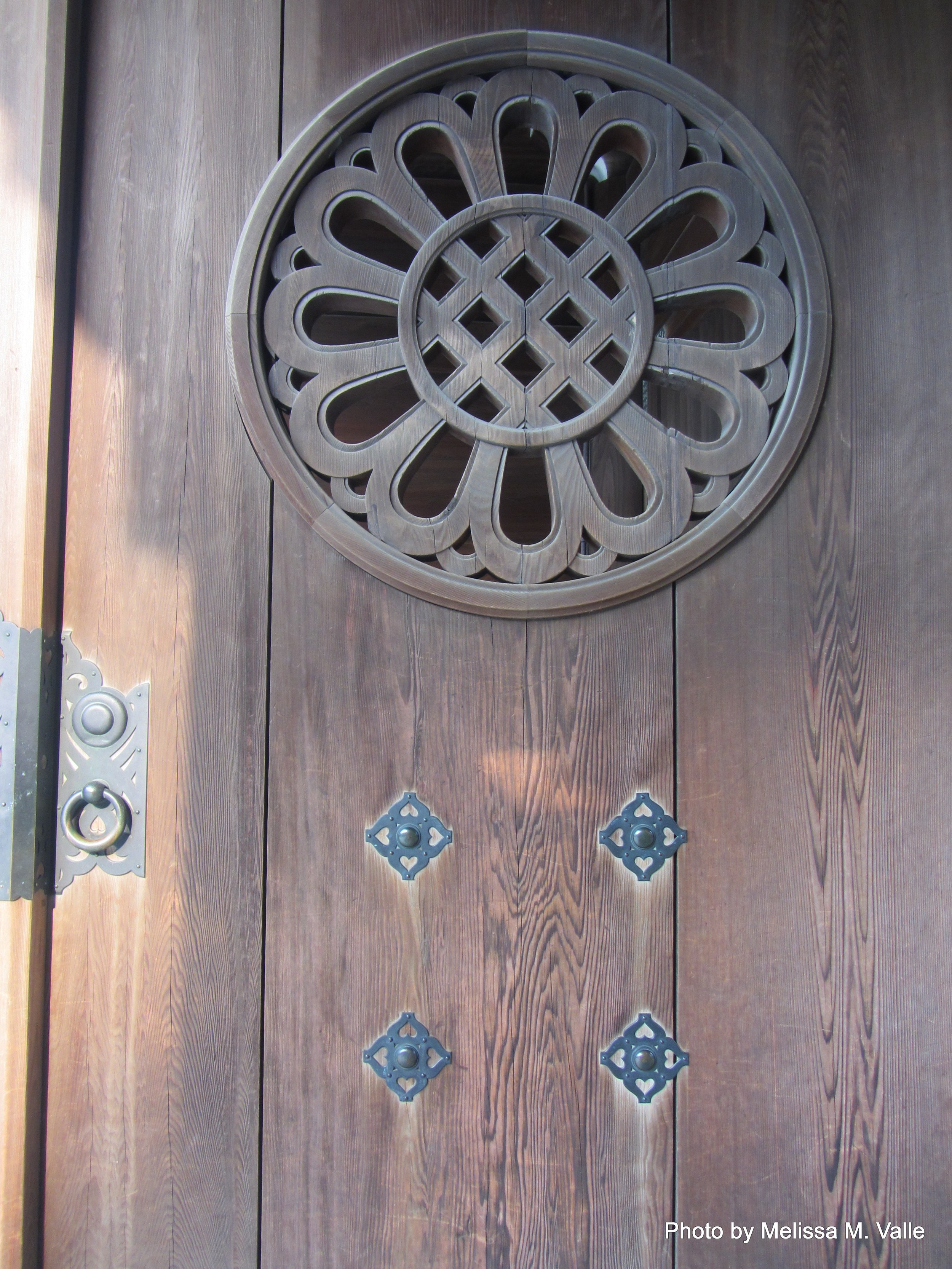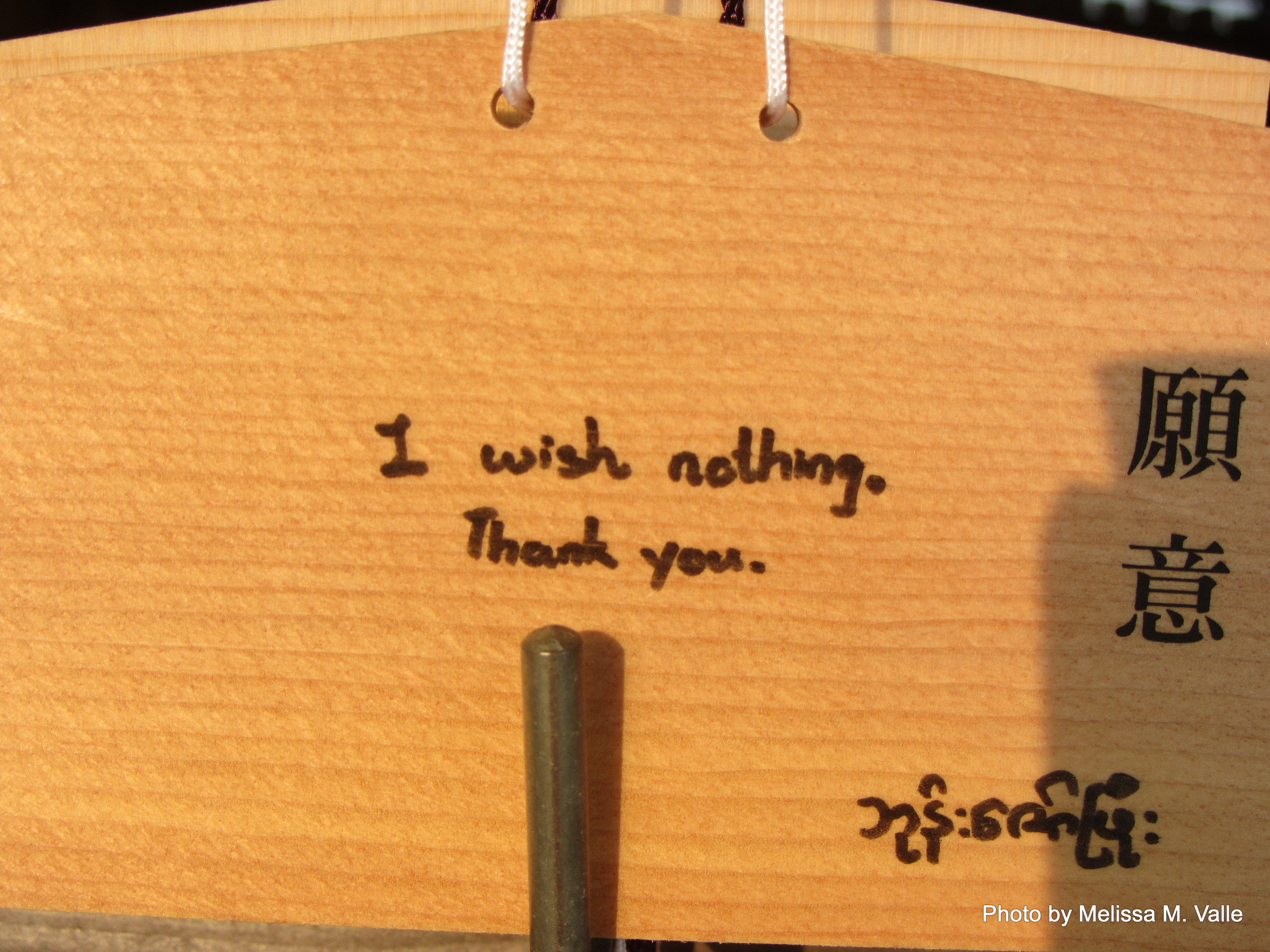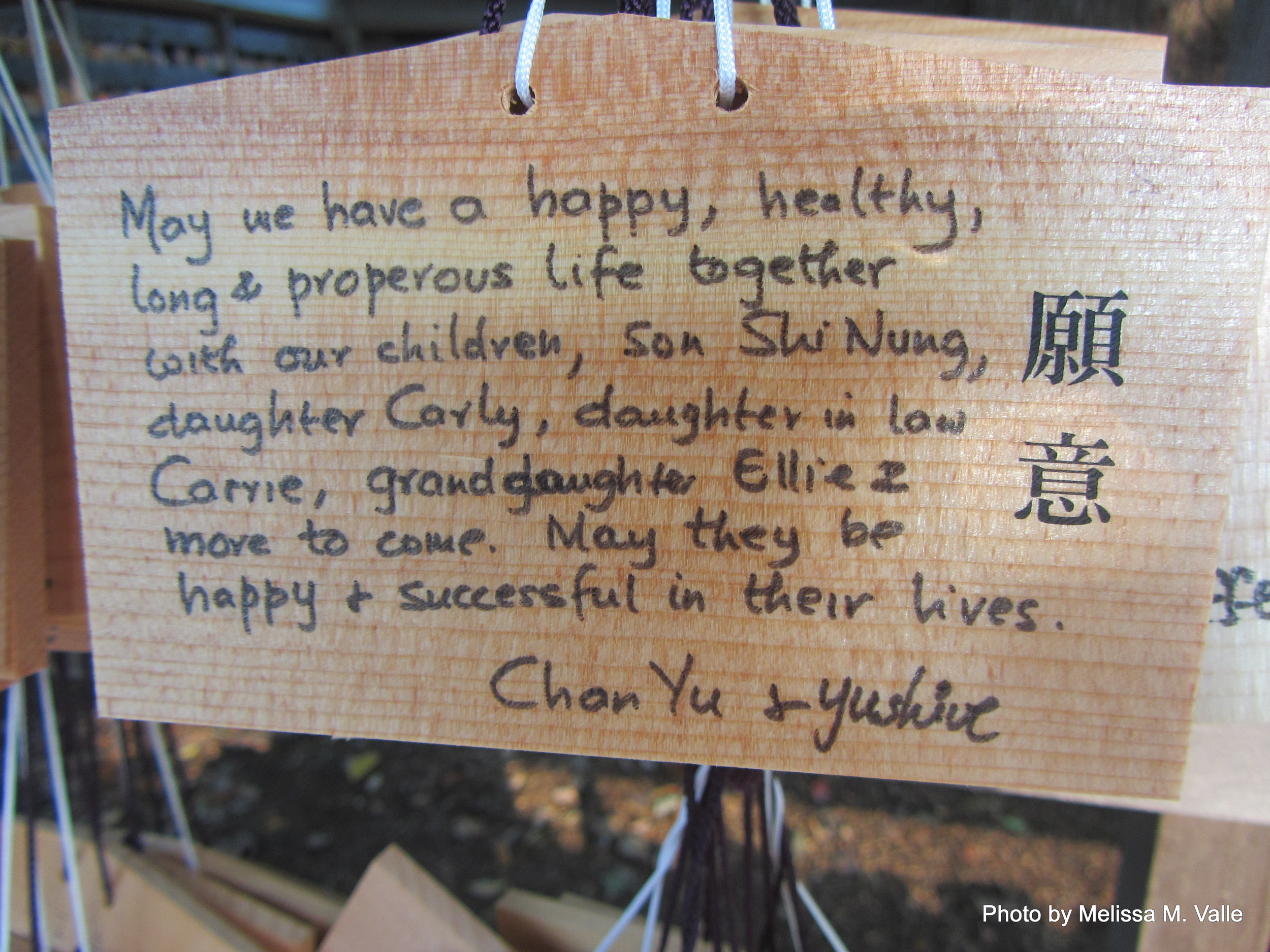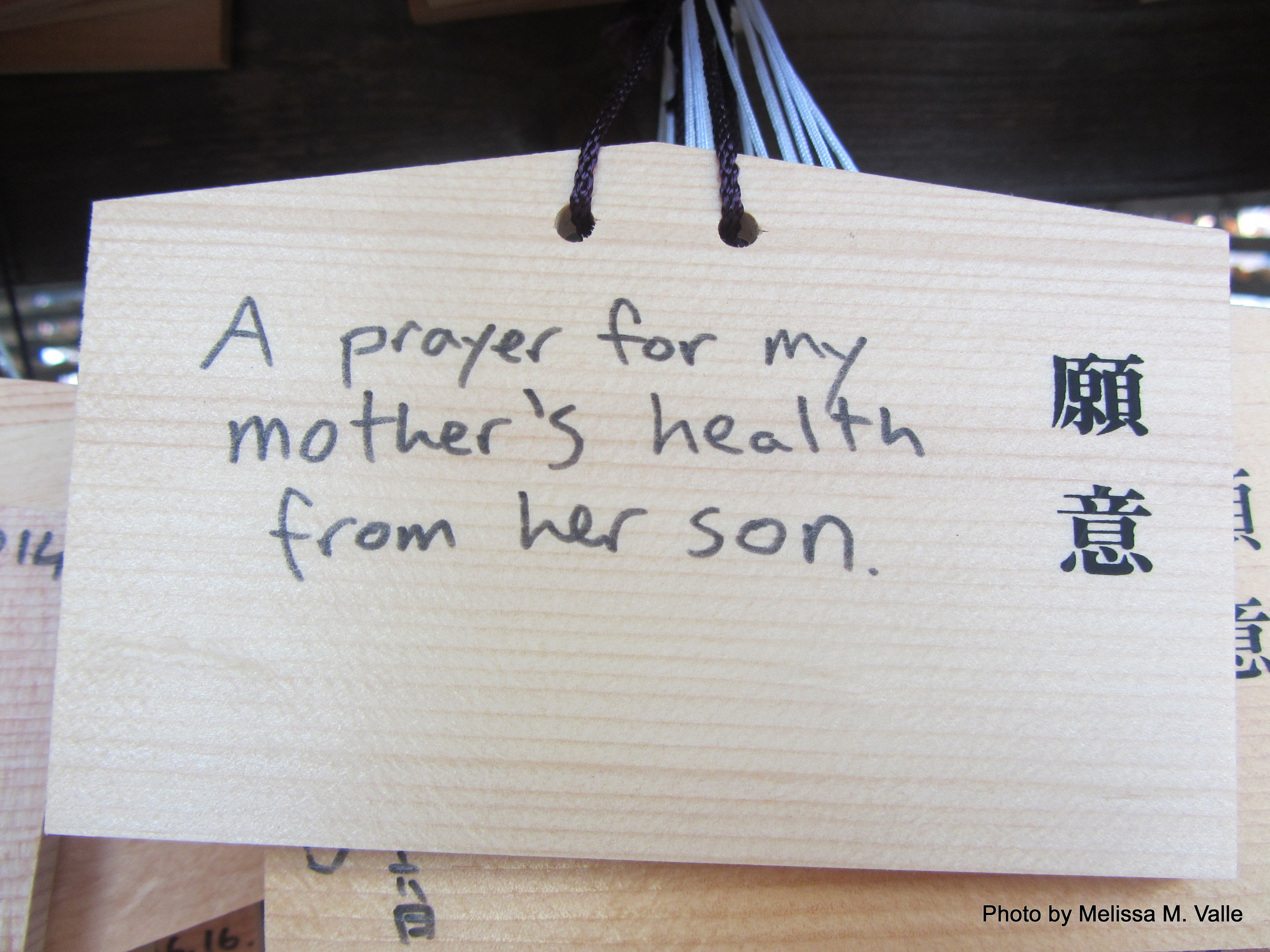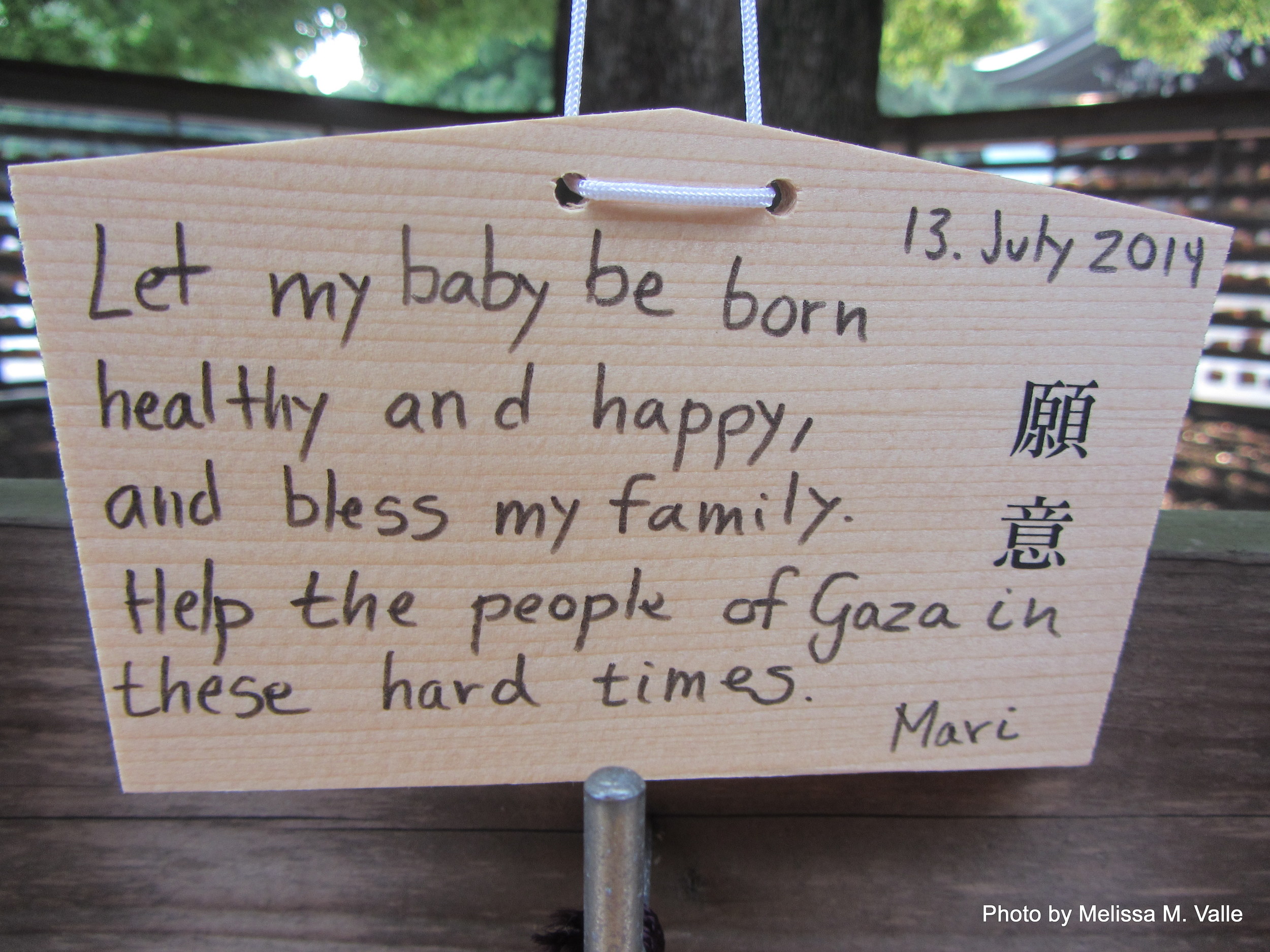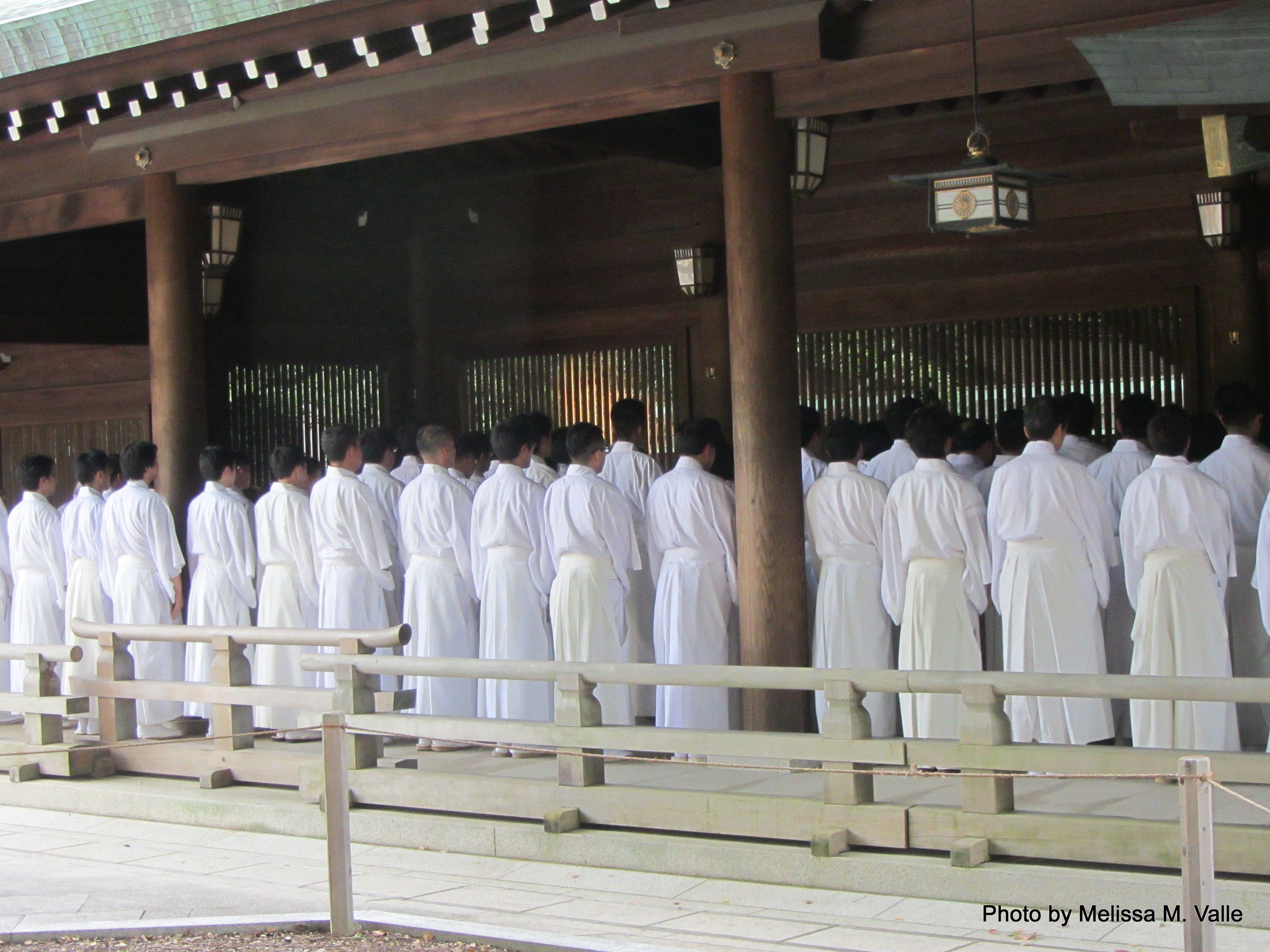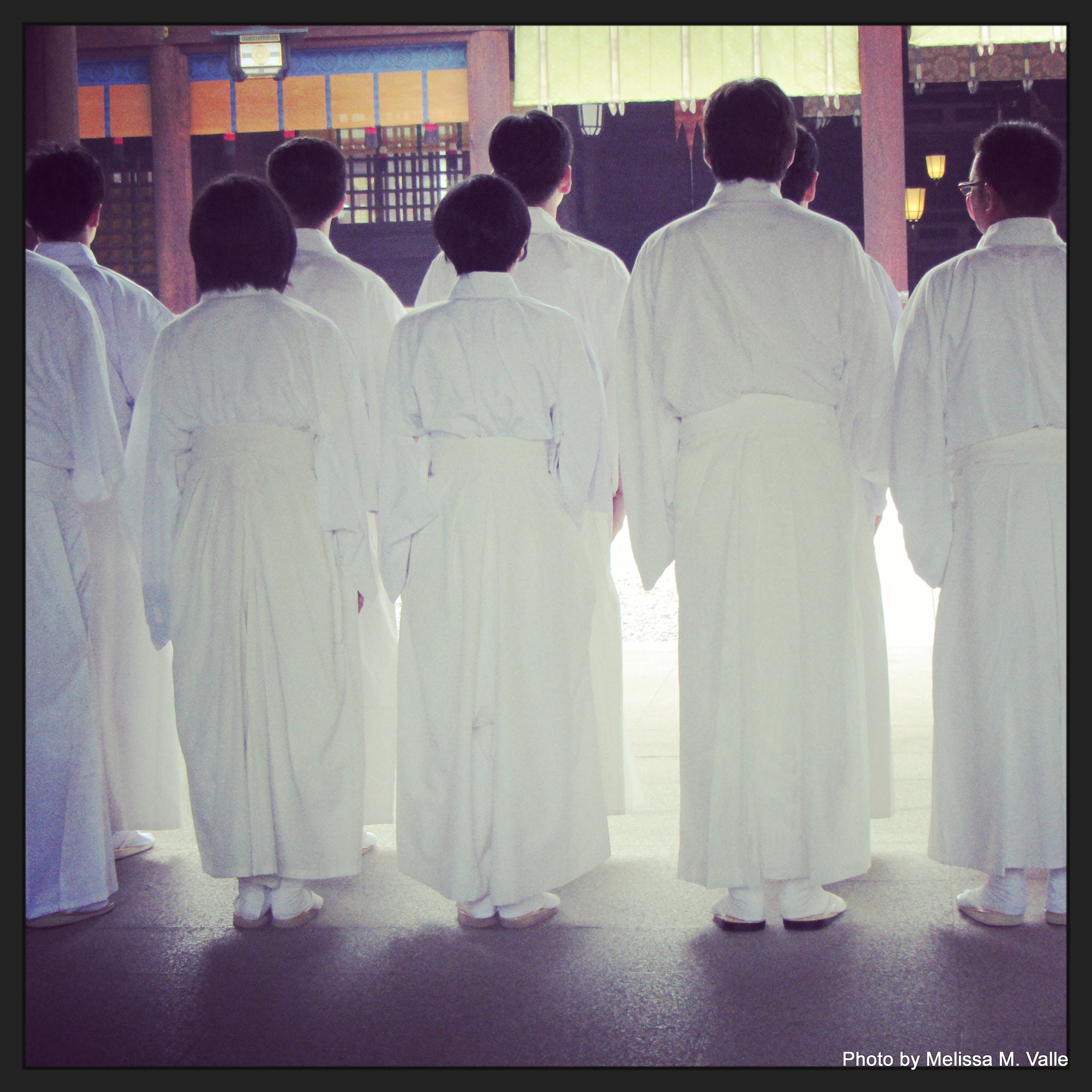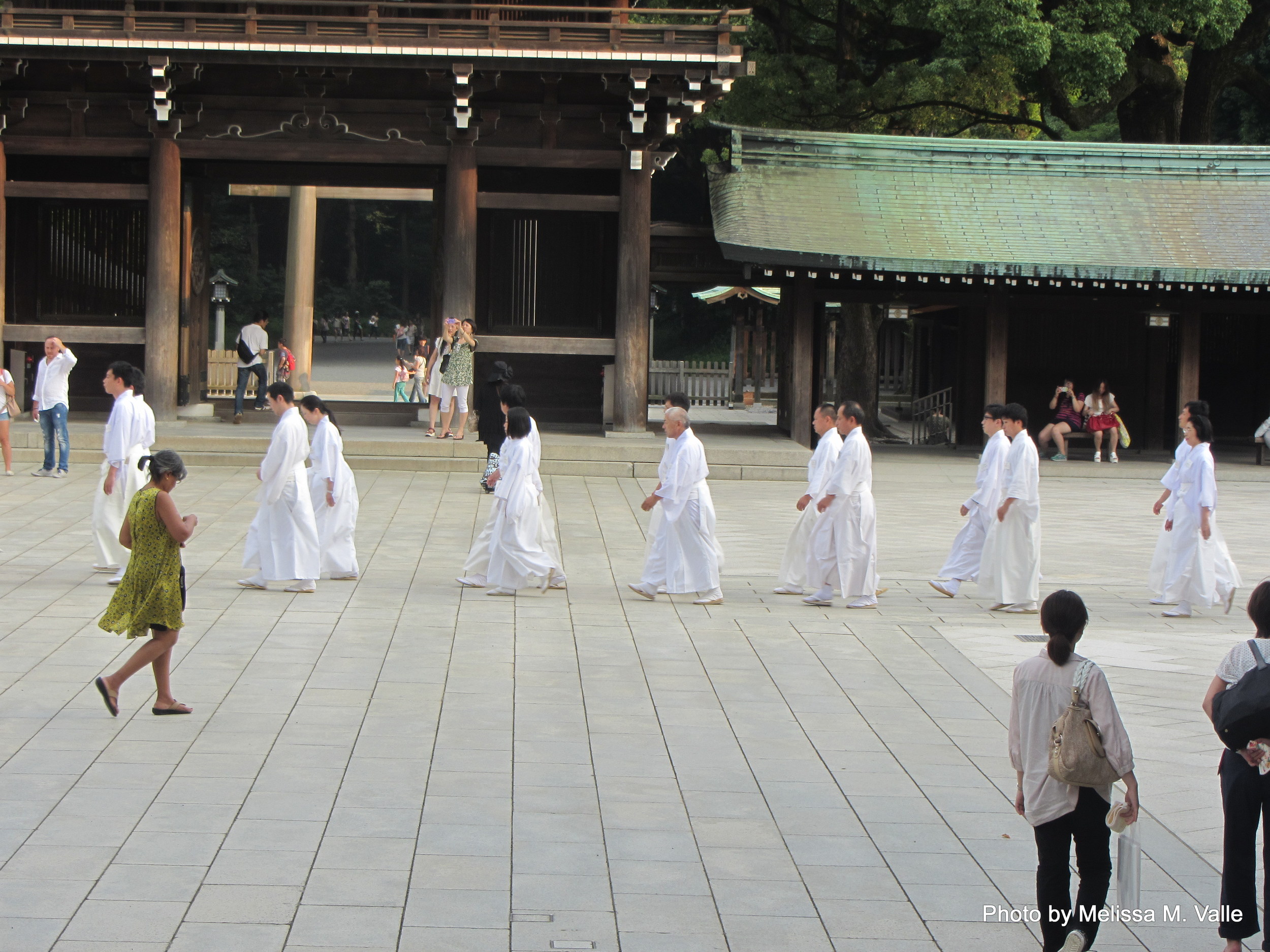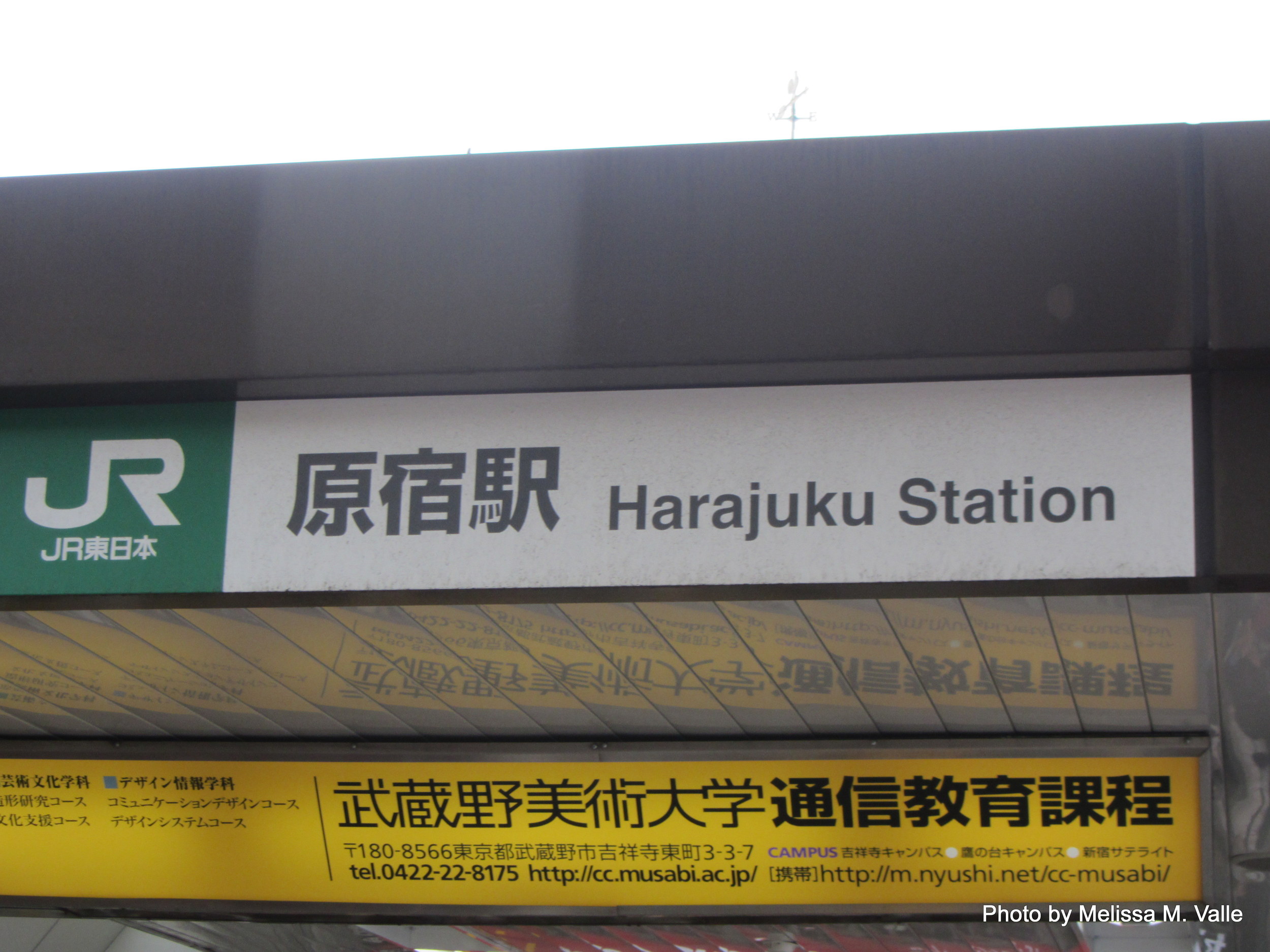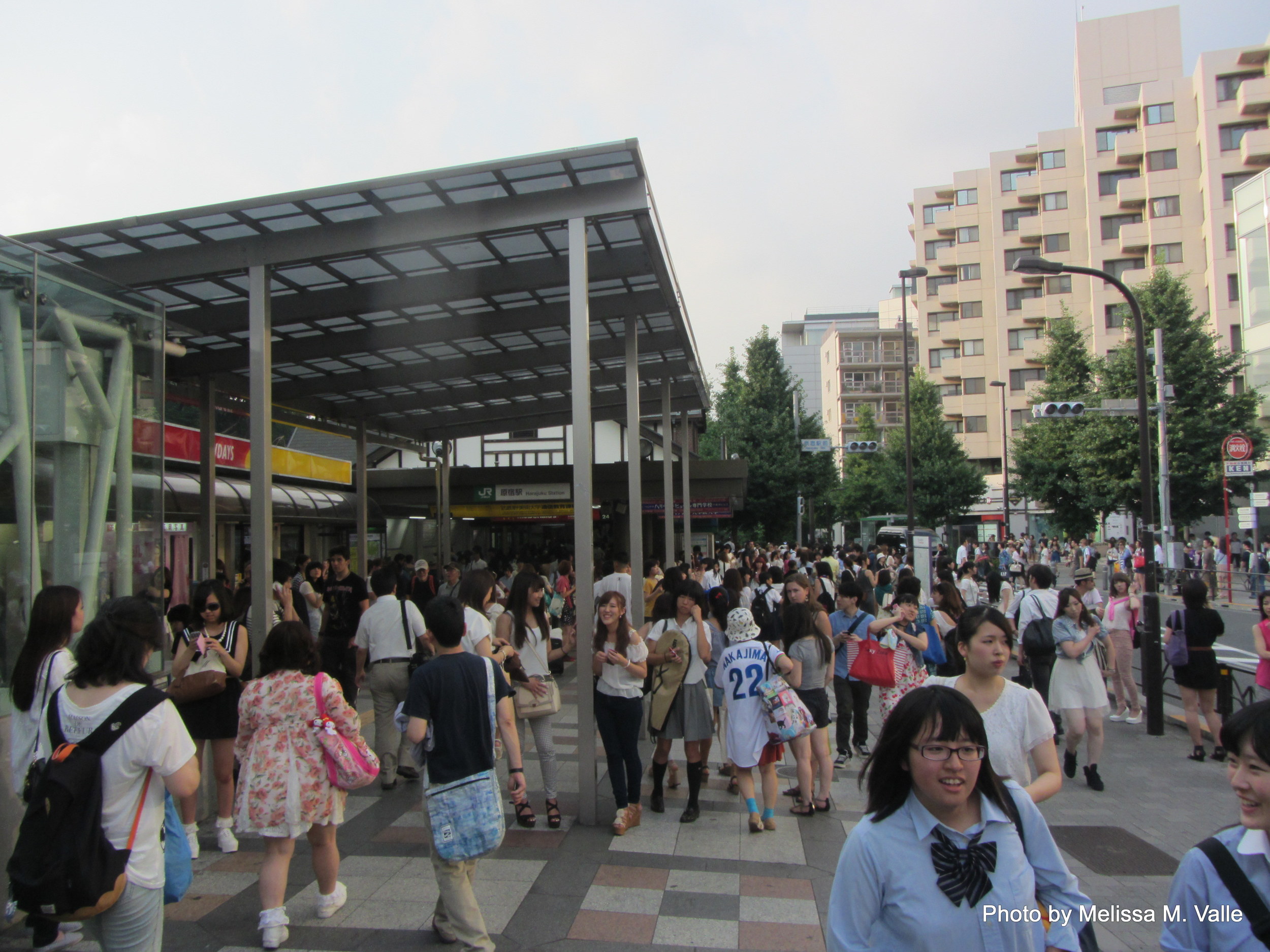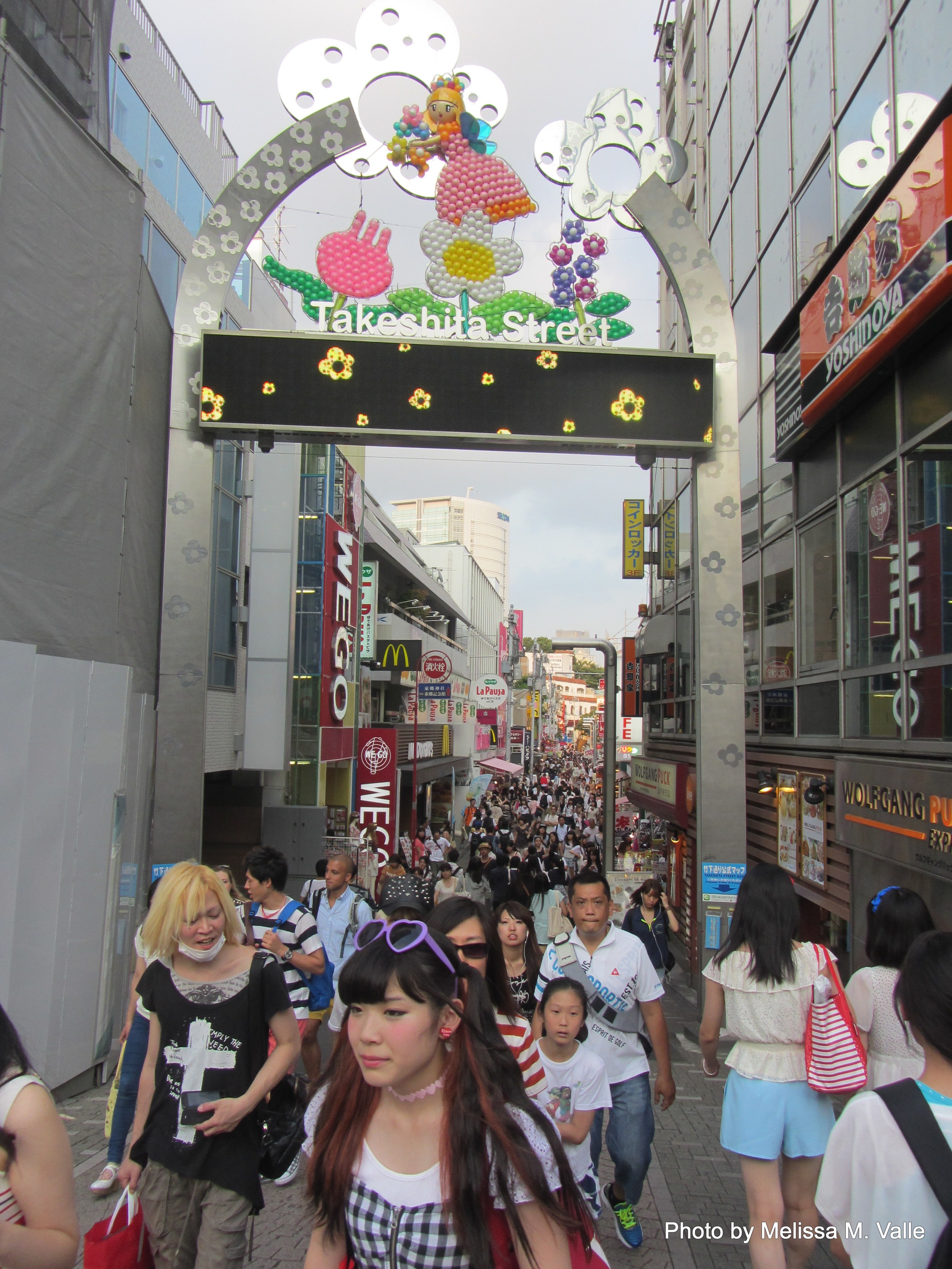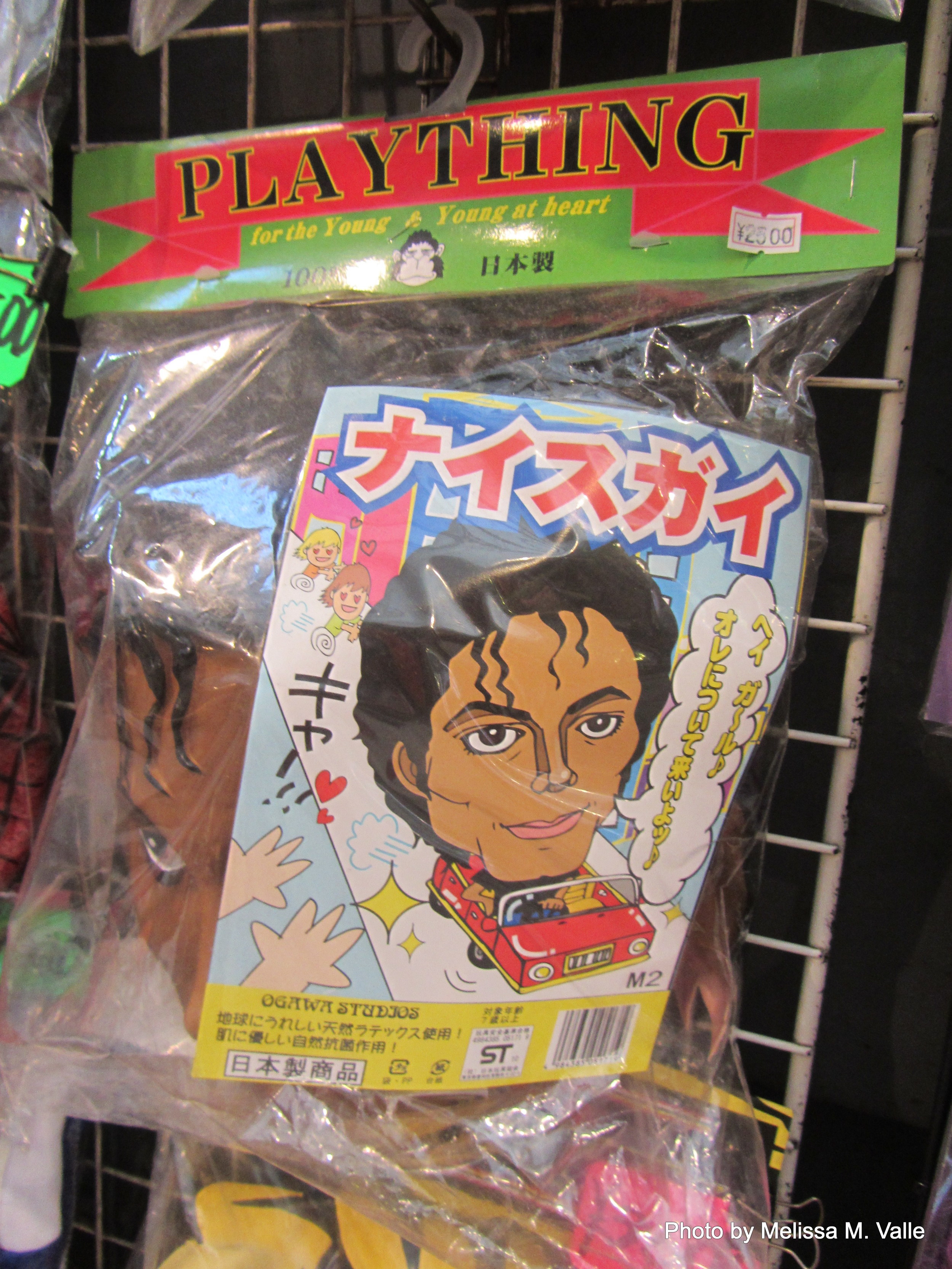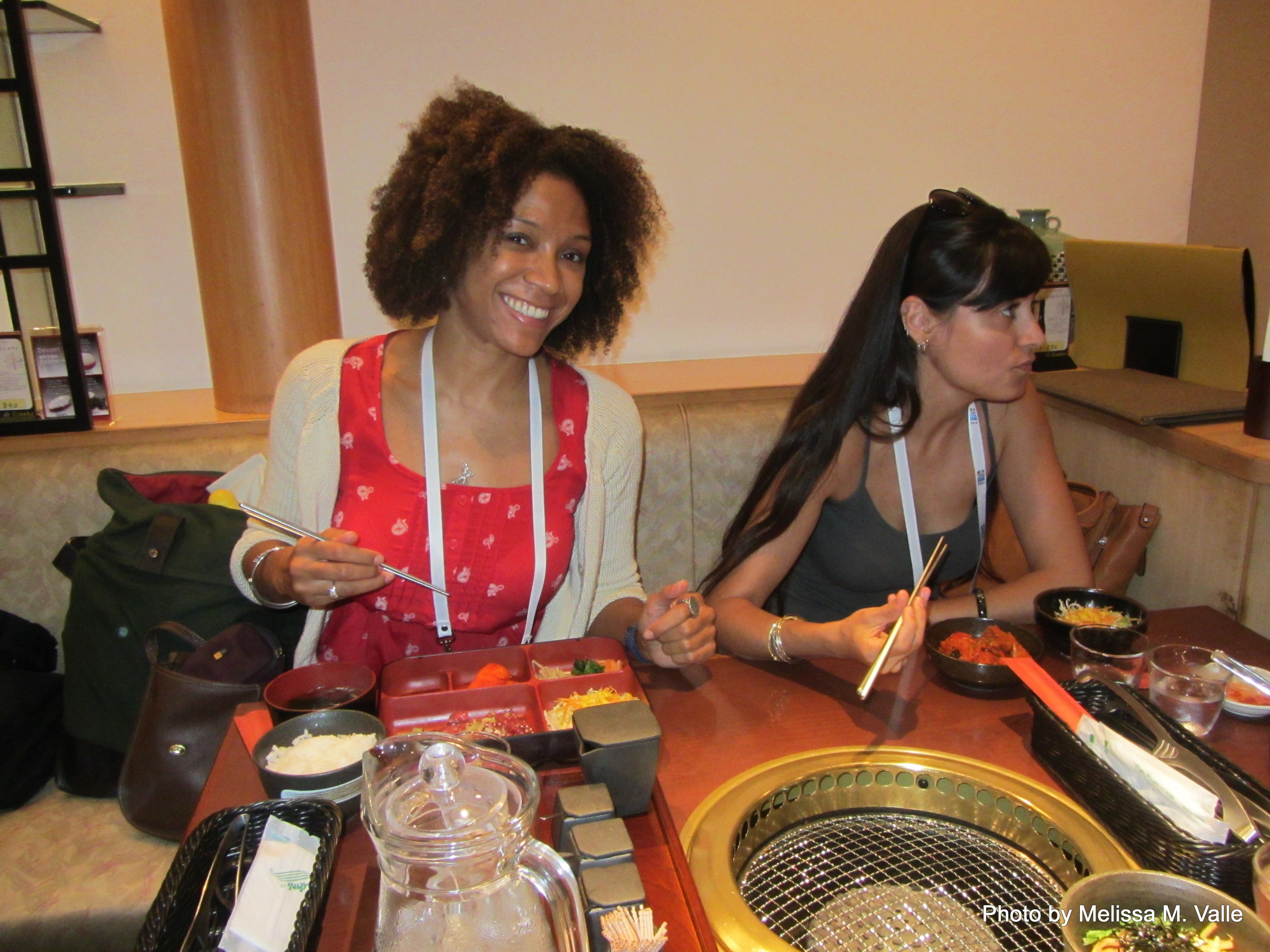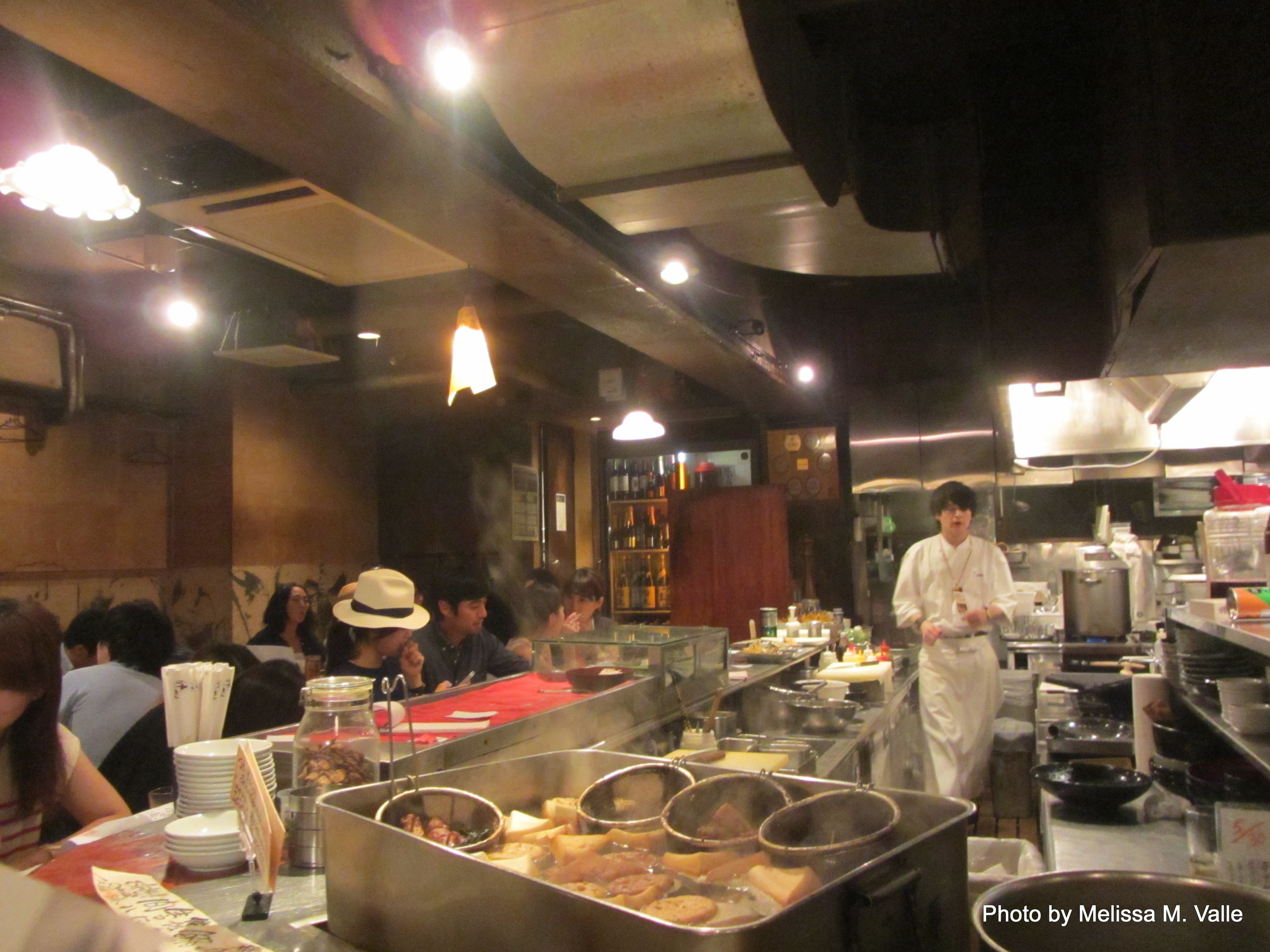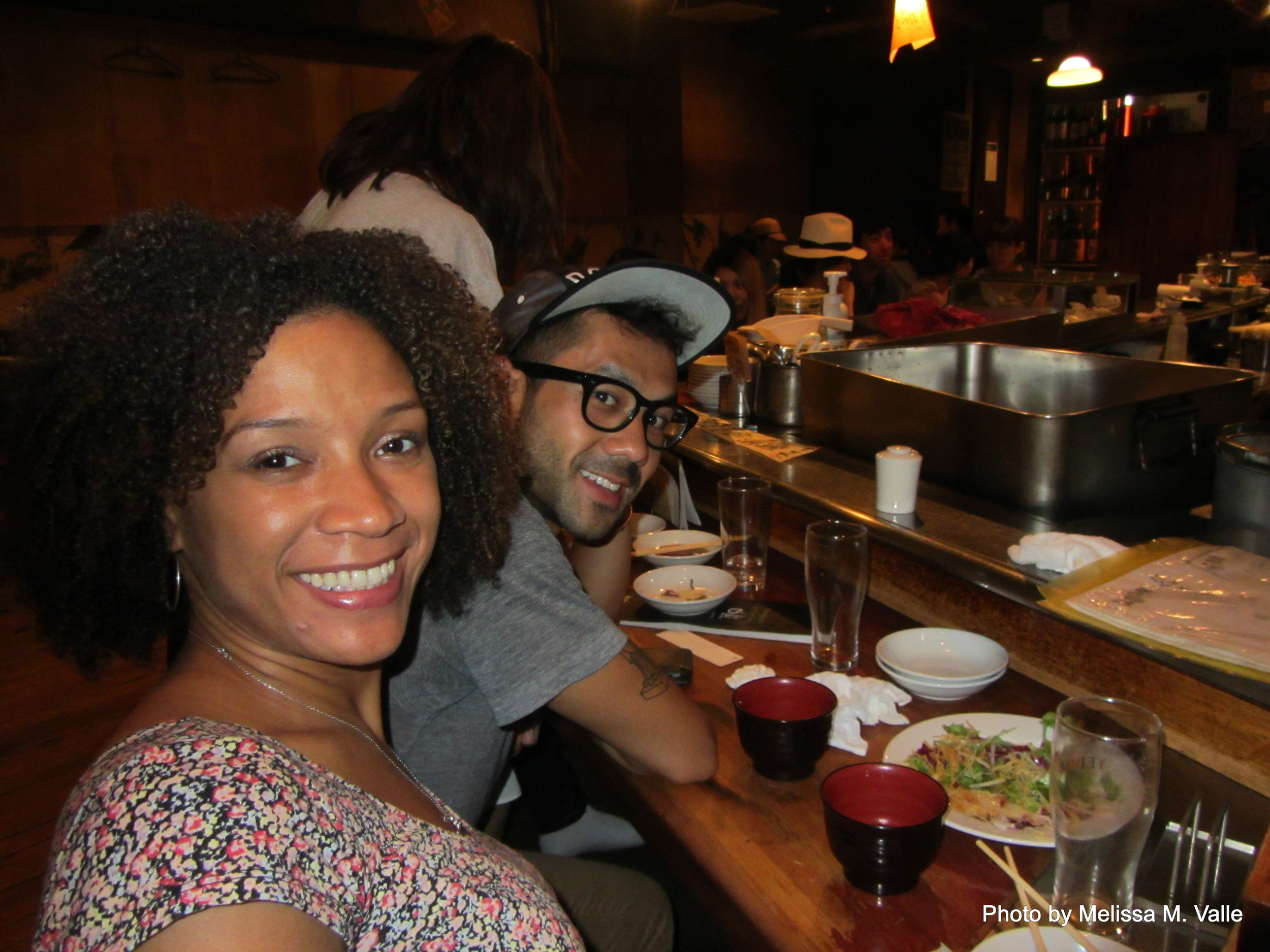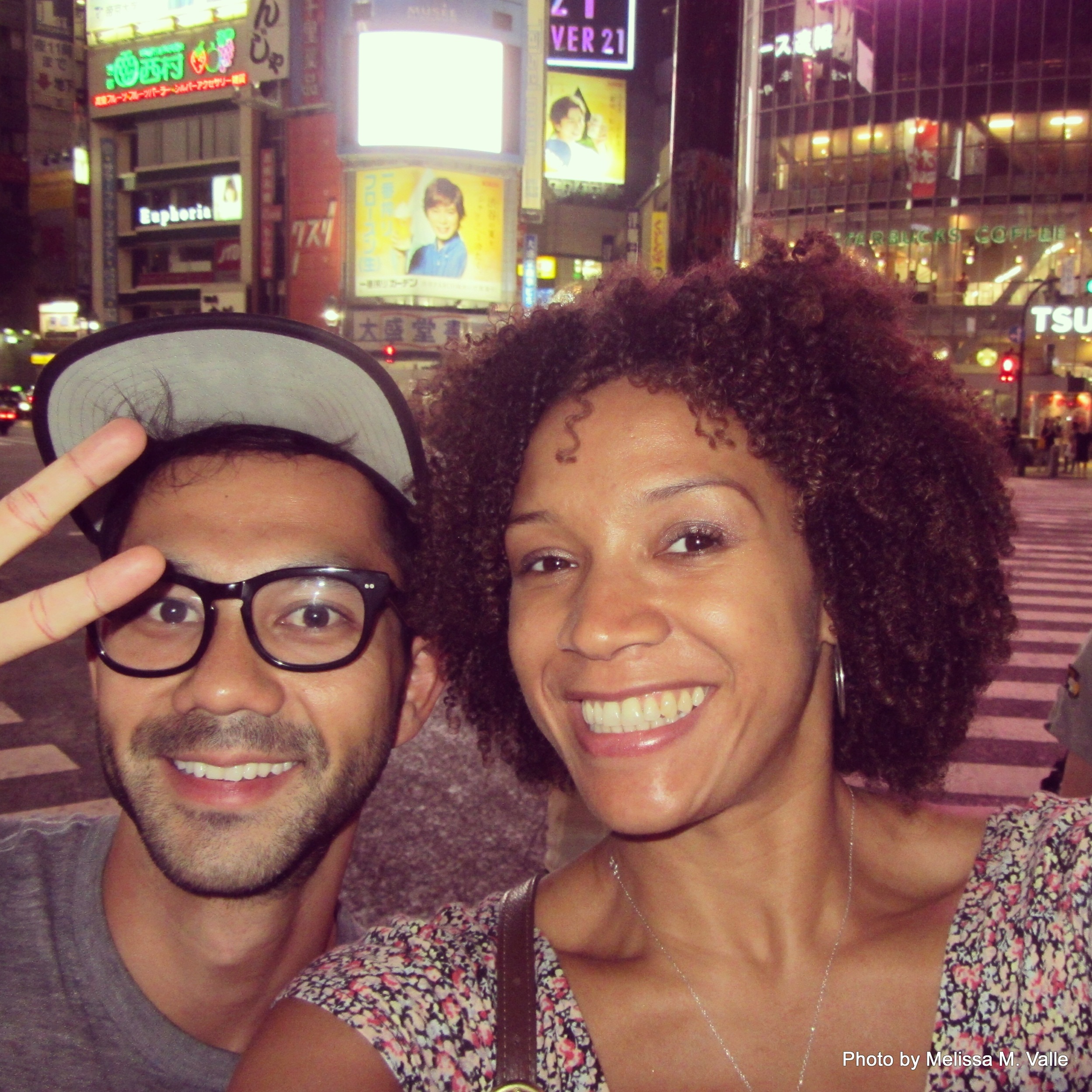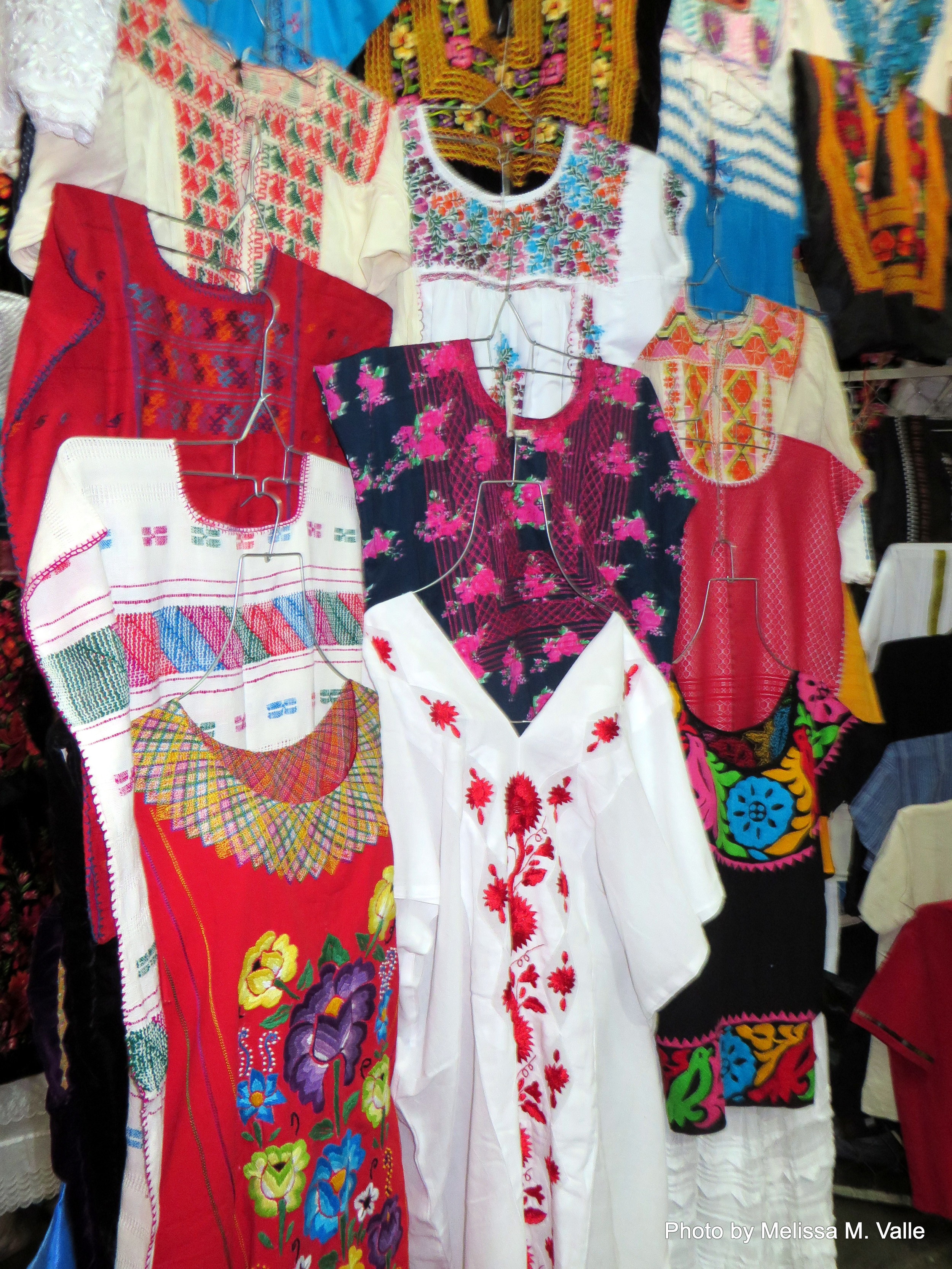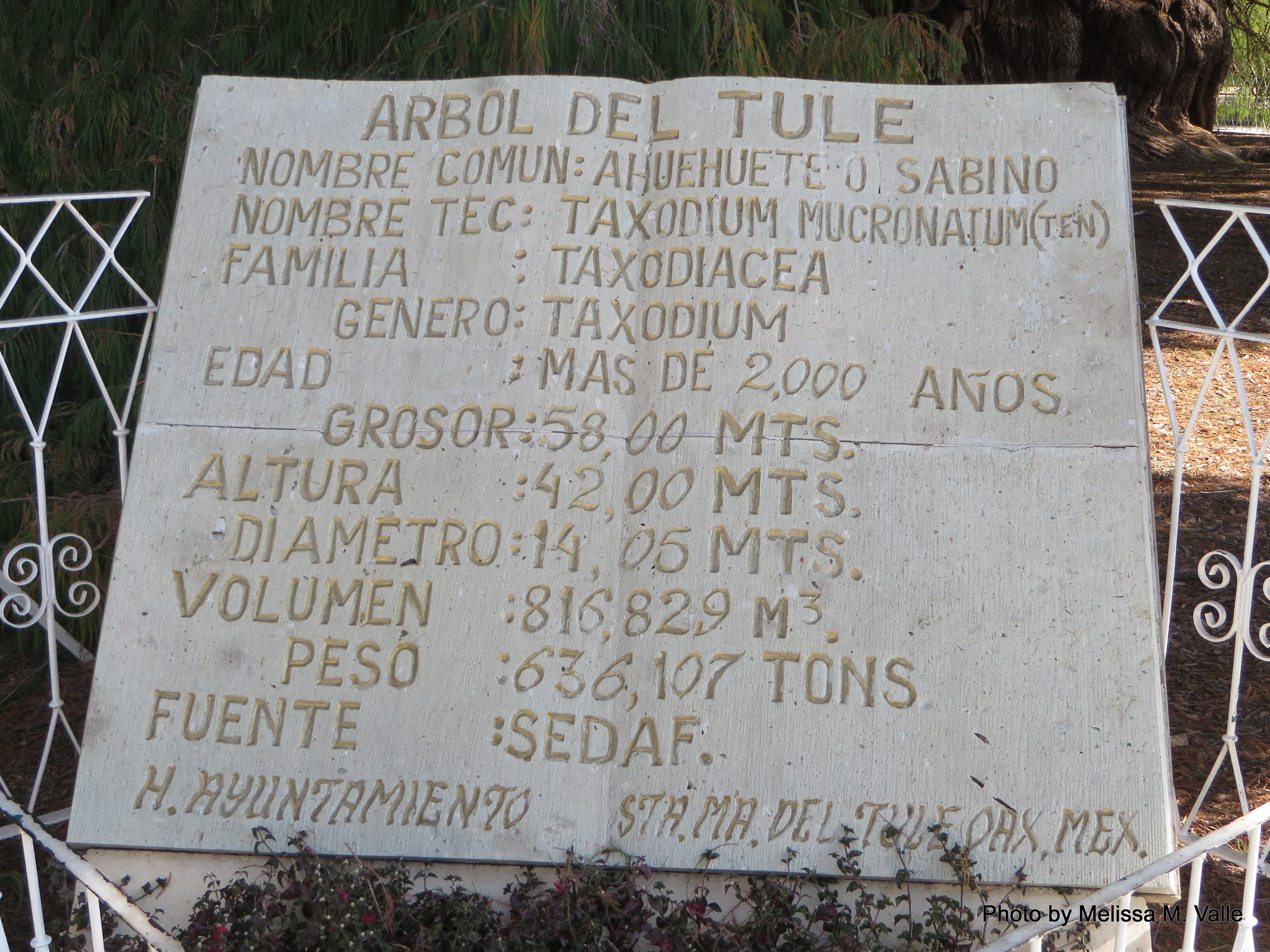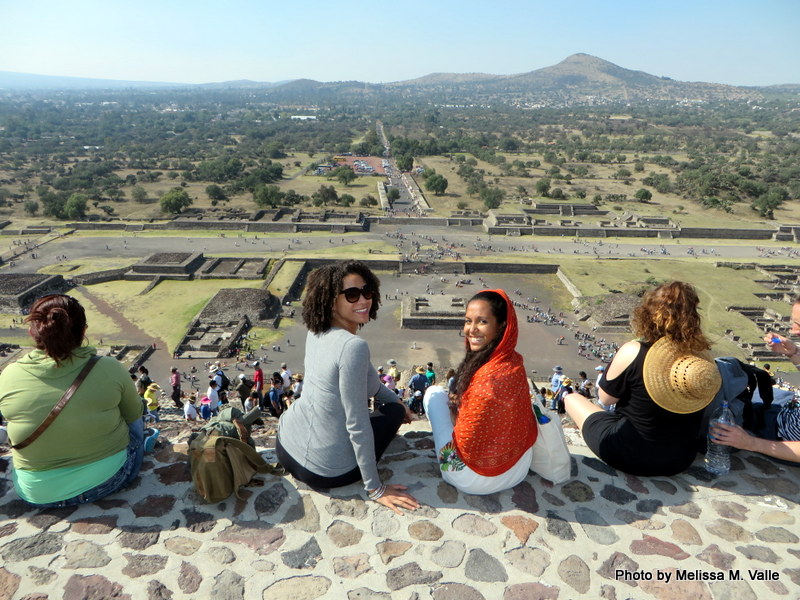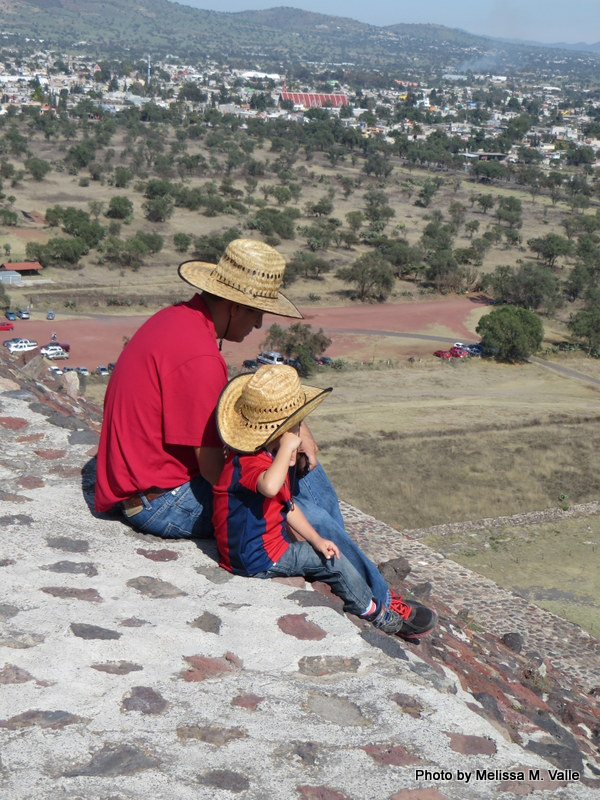When your relationship with U.S.Bae has soured, it's time to take a break.
Read MorePuerto Rico: In search of the light of the shining star
My little Mami
My relationship with Puerto Rico always feels complicated. And subsequently so are my trips there. I often have this sense of being in a space that is quite familiar, yet distant and foreign, which probably isn't particular to me. I think many of us first-generation mainland US-born Puerto Ricans have this sense. Linguistic barriers and bi-racial/ethnic identities further murky the waters of a clear sense of what Puerto Ricanhood means for me. I didn't grow up speaking Spanish, although it was often spoken around me for a number of years. My mother struggled as a child when she arrived in the United States* in the 1950s. Unable to speak English she was kept out of school for a year and attempted to teach herself with her neighbors' schoolbooks. Growing up discriminated against in the North Ward and Ironbound sections of Newark, New Jersey, she was adamant that I wouldn’t have similar troubles with English, which centered on a false belief that bilingualism causes language difficulties as opposed to reinforces cognitive abilities.
*A de facto colony of the United States I prefer to speak of Puerto Rico as a distinct nation
2010 Throwback: Me at University of Puerto Rico Protest. Check Video of event where police used pepper spray and brutally clubbed demonstrators with batons and shields.
Like my mother initially with English, I’ve struggled to gain fluency in Spanish. A glutton for punishment and determined to master the language, I decided to conduct essentially all of my ethnographic dissertation research in Spanish. What a damn nightmare. But before I officially began this work in Cartagena, Colombia in 2011 I spent the summer in Puerto Rico. And one of the greatest frustrations at the time was speaking to people in Spanish and having them respond in English. This was done primarily in San Juan and sometimes by people who clearly couldn’t even speak English as well as I could Spanish. It just threw sazón on my wounded ego.
But a noticeable shift happened during this trip to Puerto Rico in March. My challenge with Spanish has always been an emotional one, hardly about actual retention and processing. I only came to realize this while studying Portuguese in Brazil in 2001 and finding it easier (even though it is technically more difficult than Spanish) due to the lack of pressure and guilt. Since 2010 my time living in Colombia and Chile has helped to markedly improve my Spanish. While it is still an uphill battle towards what can technically be called fluency, or hell good grammar at times, my confidence has improved dramatically since 2010. So feeling a bit more like didn't have to be ashamed when I spoke brought about a comfort that allowed me to see the island as much more than an ancestral home. It started become more of an extension of myself.
The journey began with my mother and I rolling out in typical goofball fashion.
We kicked it with our amazing friend Sonia who has become so much like family to me over the years. And of course we hit up various beaches around the island because well hell, my soul is tropical and as my girl Marci said, “@machetesymiel is always on the damn playa. I like my fish frozen and shaped like stars muchas gracias.”
Mami, me and Sonia (Hey, Sonia!!!!)
There's always a laugh to be had with this one trying to take Usies. Oh mothers.
I just have to throw this in here because my mother’s obsession with basketball kills me and comes out at the most random of times. This is us at Walgreen’s buying sunscreen on our way to Luquillo Beach.
I visited the town of my mother’s birth, Dominguito, located in Arecibo. By coincidence there was a festival going on and I had brought the family tree I’d obsessed over last year. I was determined to find information about my great-great-great-great grandfather, Jose Ramon Larrieu y Despiau, who was apparently mayor of Arecibo in the 1800s. There’s a legend about him that sounds like some shit straight out Love in the Time of Cholera, well probably because he and bunch of other members of my family all died of cholera. Given his French ancestry my fear is still that our family was plantation owners who fled to Puerto Rico from Haiti during the revolution. I can neither confirm nor deny this potentially shitty historical background. I ended up running into a woman who was selling her book on Arecibo history and I had to point out that she’d missed my great X4 grandpapa. It was a pleasant exchange in my opinion but my mother has since used this incident as an example of something that is just "very typical Melissa.”
(Video Disclaimer: I had not spoken Spanish in 3 mos. #TheStruggleIsReal)
Me, my mother and Sonia hung out in Arecibo for a while. Some of it was quite beautiful and being there was refreshing.
#CarefreeBlackGirl Puerto Rico
But there was this other side to being in Arecibo that reflected the struggle of the island, one that tourists don't see or care to see. I was struck by the emptiness of the center of town on a Saturday and the abandonment of so many properties.
Yet even amongst the abandonment there were people still trying to make a life in spaces that had lost a sense of vitality, in some ill way like a fetus trying to grow and survive in a mother who has passed on.
First cousin once removed with first cousin twice removed. I think that's how that goes.
We headed to Dominguito and visited my mother’s first cousin who lives in the house once owned by my great-great-grandmother, Concepción “Concha” Rodriguez. I spoke with Junior and other family members who lived nearby about the family tree and although I’d met a few of them before I didn’t feel as connected as I did this trip. I had a sense of who people were, going back for generations, and that made their faces light up. I listened to stories of our family and looked at artifacts of my great-grandmother’s.
Great grandmother, Concepción “Concha” Rodriguez
My great-grandmother's Singer sewing machine
Wait, is that antique bottle called, Old Colony??
My mother went back home and I got to spend a few more days basking in the glow of the island. I got to spend time with people who I have grown to appreciate (one of whom will at some point be featured in the memoir... LIBRO!) and see places I’d known over the years.
El Morro, San Juan, Puerto Rico
View of La Perla, San Juan, Puerto Rico
Image of political prisoner, Oscar López Rivera
Piraguas cart
Where Kola Champagne was created. San Juan, PR
Wonderful San Juanero artist, John Melendez, whose light-hearted nature makes me crack up every time I see him
I was on a quest to buy this serigraph this trip. I first saw it during my summer in Puerto Rico and I had to have it. I shopped around for it and sadly couldn't find it for purchase this time.
However, I did manage to come up on this gem of a silkscreen that I had to cop for obvious reasons.
"Machete Boricua" by Novo 69/80
The struggle for a place in the world is one that is constantly being battled by Puerto Rico and Puerto Ricans everywhere. Puerto Rico was one of Spain’s longest held colony (if not the actual longest). It was then almost immediately seized by the United States in 1898 as a result of the Spanish-American-Cuban War and has been a de facto colony ever since. Now the island is deep in the throes of a major financial crisis (for a breakdown, check out Ed Morales’ article). As Morales points out, the colonial experiment has clearly failed. American imperialism has rendered Puerto Rico neither foreign, nor domestic. The Immigration and Nationality Act gave Puerto Ricans statutory citizenship, yet the nation remains in limbo without the rights of sovereignty or true US citizenship stemming from the 14th Amendment and statehood. As I struggle to find my own place on La Isla del Encanto I can’t help but to wonder what does all that's happening now mean for its identity and its future? What future will Puerto Rico carve out for itself? What will continue to be imposed upon it? What role do people like me play, those of us who have Puerto Rico in hearts but a life outside of it? My hope is that the we'll see the light before my issues with identity become meaningless because there will be no unique Puerto Rico with which to connect.
La Bandera, battered and bruised, but still flying
The "Oh Sh**, I Traveled To 10 Countries In 2014" Review- Part 7- Yokohama & Tokyo(#9 Japan)
Here it is (a groove, slightly transformed...my bad, force of hip hop habit), the second to last installment of my 2014 Travel Year Review. Aw yeh, aw yeh (Rock dat! See what I mean...).
So I made my way from Prague, Czech Republic to Tokyo, Japan via a 5 hr layover in London. Once again my short term goal was to sleep when I could in order to stay awake when I arrived in Tokyo at 9am and not lose a day. Because my conference was in Yokohama I had to make my way from Tokyo Narita Airport to Yokohama via train. There are various kinds of lines in Japan making it particularly challenging to navigate initially. Multiple train companies mean that if you decide to buy an unlimited card for one system it may not actually take you where you want to go because another company may operate that line you actually need. Not fun or convenient, but manageable. I stayed at a very bare bones spot called Hostel Zen, small single room with a shared bathroom. Nothing to write home about. The first two days I did the Yokohama and International Sociology Association conference deal.
Yokohama, Japan
This is what the subway map looked like.
Japanese Subway Map
Lost in Translation, the Afro version
And subsequently, this is what I looked like. If you don't know what this look is, some would call it "confusion."
The conference opened with some sociologist zingers and Michael Burawoy dropping knowledge of sorts.
These performers did their thing.
The next day I played conference hookie and ventured out into Tokyo. It was both cool and exhausting. And not exhausting necessarily because of how tired I'd been from traveling to four countries in Europe before my arrival, which was only made worse by my overpacking. And not just because of all the people dipping and diving around Tokyo, because come on, I live in NYC. But just what it took out of me to navigate such an unknown space alone. I think it's important to punctuate this a bit, not to cause travellers' panic, but because it's crucial for many as they venture out dolo in the world. I've discussed this before. Understand that it's not uncommon to feel a sense of unease. Just leaving the hotel takes a certain degree of courage, figuring out how to get from A to B, how to feed yourself, how to work through being such a visible outsider, how to be someone in a strange place. All of these feelings had been swirling around within me and at this particular point I really became officially over solo travel.
But hey, I was still fortunate enough to be in Japan. Gotta keep it moving. I did just that and ran around Tokyo. First stop, Shibuya.
Shibuya selfie
Shibuya
Shibuya, Tokyo, Japan
Shibuya, Tokyo, Japan. I couldn't tell if these were those "Black Style" folks I'd seen footage on. Their color was bananas. Well I guess more like coconut shells technically but you catch my drift.
All I know is that this woman's face behind them sums it up.
You never know what kinds of stories you'll hear when you're abroad. The nature of the circumstances leads you to converse with people you may not have otherwise. This is Catherine Fisher. She and I struck up a convo over accessories in a department store. The article I hold in my hand came out the day before we met. She'd just released her book, I Am Catherine Jane, which details her survival and fight as the victim of rape by a U.S. Navy sailor in Yokosuka. I told her I would share her story.
Me with Catherine Fisher, author of I AM CATHERINE JANE
I ate then made my way on foot from Shibuya proper, I guess you could say, to the Harajuku section of Shibuya. I captured this video on the way because it is distinctly what I call a "sound of Tokyo" in all its cutesy and kind of annoying splendor.
Before I went deep into the Harajuku neighborhood I went to the Shinto shrine Meiji Jingū, something completely opposite of the above video. It was this peaceful, green oasis in the middle of the city.
These were the personal prayers and messages of gratitude for the deities enshrined at Meiji Jingū which I could actually read and stood out for various reasons.
Shrine Selfie. Wait, that sounds disrespectful. I mean that is what this is though, but...I don't know.
Then it was off to the fashionable and festive, Harajuku neighborhood of Shibuya.
Smells like teen spirit, Tokyo
I call the next series of pics "???"
And these are from the "you're welcome" collection.
Women Only Subway Car in Tokyo, Japan
I rolled back to Yokohama on the "Women Only" car which I'd discussed in the article I wrote on street harassment for The Shadow League some time ago. It was a reminder of what things have been put in place to protect women from the sort of unwanted touching I'd experienced on the subway car in Chile.
The next day I distributed my work at the ISA conference in Yokohama.
Pokemania lives on
I'd always thought the Pokemon thing in Japan was exaggerated. Turns out, not so much. They really do STILL love them some Pokemon in Japan. It was everywhere.
During the wee hours of the morning I wrote the only blog post I would come to write while actually in Japan called "Scars." I think the shit is deep, but what the hell do I know?
I always appreciate a good travel mash up. Meeting up with the Danish girl I met in Ecuador in Copenhagen. Kicking it with my Colombian crew in New York. Hanging tough with one of my New York besties in Cairo, Egypt. I had two great mash ups in one day in Japan. You may recall this lovely cast of characters from the Vienna, Austria trip only a few weeks earlier. We all met up for lunch at the conference.
One of the things I noticed in Japan is how often I saw people wearing things that were written in some seriously grammatically incorrect English. At one point I thought maybe it was purposeful, but in the end I thought not. Here the urban sociologists are posing in front of the trendy Urban Research Make Store. Wait, huh? Yeh, I don't know either.
Later that night the mash ups continued as I got to kick it with my fellow urban sociology, PhD hustling cool kid, Nelson, in Shimokitazawa and Shibuya (Soon we'll be in Italy! Woo hoo!).
Next stop, Kyoto!!
21 Days in Mexico- Days 14-16 (Oaxaca)
Day 14- Tuesday, January 6, 2015: Day 1 in Oaxaca, Oaxaca
We arrived at the bus station around 7am and tried to contact Eduardo, the guy who was supposed to host us from Couchsurfers. But here he goes talking about some, “oh last night my roommate's friends came so you can’t stay tonight but you can stay tomorrow.” Boo. The tourist kiosk didn’t open until 9am at which point we got some hostel recs (couldn’t check the internet because there was no wi-fi, although there was an internet café). We got in a cab, which seemed overpriced at $40 pesos considering the walk was supposed to be 15 min., but we had all our stuff so we sucked it up. We had to stop at a few hostels before we ended up at a really low-end one called Posada Tanguyuu. The rates worked ($300 pesos per night, USD$11 each) for our private room and bath so we went with it, thinking we’d only have to stay one night. They allowed us to check in early and we dropped our things and rolled out to explore Oaxaca City.
We first went through Oaxaca City’s Zócalo. And it was striking because it was full of tents and signs referring to the 43 Ayotzinapa missing students. The encampments appeared to be set up in protest. I’ve mentioned previously the importance of these disappearances in terms of the political movement they’ve incited throughout Mexico, particularly in the state of Guerreros where the students were disappeared (see Tens of thousands protest massacre of Mexican student teachers). This spirit of anger and sadness was really visceral in Oaxaca City.
Regardless of whether folks actually consider it frequently, the political economy of a country affects most aspects of people's daily lives. As a sociologist, educator and former community development policy director such areas are of an obvious interest to me. But even without wearing any of these hats, an understanding of a place's political and economic climate when traveling provides a useful context to help to orientate you. A superficial understanding is often unavoidable in instances where you're really on the ground, but it's something that you will likely completely miss if you stay in a resort bubble, unless you actively seek it out. The owner of that major hotel chain and all the government officials who support and benefit from it are hard-selling happy places and don't really want you to know who's on strike, what the infant mortality rate is, how many folks are living below the poverty level, what the distribution of wealth is, what the relationship between the people and the police is, whether citizens support the state and feel adequately represented, whether the press is merely an organ of the state and private business interests, whether all children have access to a free and quality education. But these factors, coupled with an understanding of the interconnected politics of race, class and gender, plus elements related to culture (i.e. the learned behaviors of a society related to language, customs, symbols, etc.) are all crucial to the places you're going and an understanding can make the difference between you merely seeing a place and experiencing it in a socially responsible way.
If in the city of Oaxaca one's got to take into account that the people of Oaxaca have a history of actively protesting oppression. They are 'bout it for real! And the responses to the recent events with the students demonstrate that (For example see Mexican Teachers Block Oaxaca Airport to Protest Missing Students). These Zócalo encampments were first installed during the 2006 teachers protests. I'm doubting they've been up since then and were likely put up again in response to the missing and murdered students. Two of the wounded protesters and one of the disappeared were from Oaxaca.
The whole time we were there we kinda felt Oaxaqueños weren't really down for our little tourist interests. I'm not sure if it's related to this tension between the state and the people or if they are just less friendly there than the places we'd previously been, but all that Mexican warmth we'd felt before had clearly left the building. But hey, in the end I didn't take it personally. There is real shit going down.
So we walked around the Zócalo.
The Cathedral of the Virgin of the Assumption
Then we hit up a place on this NYTimes 36 Hours in Oaxaca article, the 20 de Noviembre market. The article was right. We walked in and were struck by smoke and meats.
There is a lot more pandering for customers at this market, which made it less enjoyable. We ended up at a place called Maria Theresa’s for tlayudas and enchiladas.
Maria Theresa was another grandmother- like figure so I tried to just keep a pleasant face as she went on about my “chino” hair (everyone keeps calling the curls chinos here), how much she liked it and how she had a young relative (niece or granddaughter) who had really straight hair and wanted chino hair and did everything she could to make it chino but it never worked. I’m sure she was sharing to be nice, but the constant convos about my hair are typically uncomfortable, awkward or just annoying.
*Don't be alarmed. That doesn't say "Mole Negro" as you might think. Mole (pronounced like Mo-lay) is one of Oaxaca's most famous sauces.
We left the market and walked to an artisan market called Mercado de Artesanias.
We then moved on to a spot called Café Nuevo for lemonade and coffee. It looked like someone decided to make use of a former horseway in a colonial home, but it was chill and had wi-fi so it worked. We then stopped by the space that Eduardo (Couchsurfer) was opening up. It's a café inside a cool pre-existing artist collective space called Espacio Zapatista. Revolutionary street art and such collectives apparently blew up following the 2006 and 2007 protests in Oaxaca.
We said we might all get up later but we never did and never stayed with him.
We stopped at this very funky little spot across the street and said what's up to Punk Frida.
We found the English books store called Amate Books, stopped at a place called Brújula for bagels and coffee, and then a tourist office to book a tour for the next day. We later ventured out for food and went to another spot on that NYTimes list called Biznaga (and every time I see it I just wanna say Bazinga!). But the wait just to sit at a table was 20 minutes and it didn’t seem worth it given the menu. We went to this spot called El Sagrario which was nothing to write home about. We gave up and took it down for the night. Womp womp.
I really don’t expect folks to shuck and jive for me as a tourist, but there was something unwelcoming about the city. Again, it could totally be a function of the political climate, which I get. But as a visitor there wasn’t a whole lot happening in the historic center (maybe on some underground shit that we never uncovered) and we wondered whether all the hype we’d heard about Oaxaca was restricted to the beachy coast and not the city.
Day 15- Wednesday, January 7, 2015: Day 2 in Oaxaca City, Oaxaca
We started the day at the Brújula on Alcalá and went to the tourist office on Murgia. We paid $200 pesos per person and the guy at the office told us that we would have to pay entrance fees for the various stops but that some could be discounted because of student rates. That wasn’t true because those rates only apply to Mexican nationals. Then of course there were different prices for things throughout. We rode for about 30 minutes.
The first stop was the 2000+ year old Tule Tree, which at 58 meters wide is apparently the world's widest tree according to Guinness. You pay $10 pesos to go into the gates which is supposed to be a contribution to help the community maintain the grounds.
We boarded the bus, went on the Panamerican highway and swooped around to the Sierra Madre Oriental to head to Hierve el Agua, which was 1.5 hrs from the Tule Tree. We had to pay $47 pesos and were told that 10 of these were for the new road or something like that.
Hierve el Agua is one of world's two places with petrified waterfalls made of carbonated salts. There are also two pools that we were told were warm but the water was too cold to swim in for us. Even though it wasn’t quite what we anticipated in terms of the beauty of the pools, it was still quite beautiful and worth the visit to me.
We then headed to an all-you-can-eat buffet in Mitla which cost something like $120 pesos.
From there we headed to the archaeological UNESCO World Heritage Site of Mitla. Unlike a lot of the other archaeological sites in the Americas this one was being used by local inhabitants upon its encounter by Europeans.
The site was used by the Zapotec people as a place for religious ceremonies and a sort of seat of government. But they also believed it to be a cave to another world. When the very Catholic Spaniards arrived and encountered the Zapotec at Mitla and were told this they thought it was a passage to hell and had it mostly destroyed, replacing one of its sites with a church dedicated to San Pablo to sanctify it. But you can still see some of the original elements in two of the best preserved and restored ruins.
- Layer (1) is believed to represent a seashell trumpet used to blow consciousness and talk to God.
- Layer (2) is believed to represent thunder and the Zapotec God of the rain.
- Layer (3) represents the five paths of human existence and is said to also be seen in Peruvian ruins.
We then took a 20 minute ride to a family-owned tejidas (textiles) workshop. This was honestly a highlight. As I’ve stated before Mexico really has some gorgeous artisan crafts and I just had no idea the kind of work that goes into the production of one of these pieces.
When a vendor says that the textile is created using natural colors that means that there was an extensive process to collect each color. To make red one has to use the nest of some insect that costs $3500 pesos/kilo (USD$250). Some colors require days to extract from things like flowers, plants and other natural elements. The shit is impressive.
We then headed to the El Rey de Matalan mezcal factory and saw the again extensive process involved in the local production of the mezcal from the agave plant (it’s basically Tequila but like Champagne in France it technically cannot be called as such unless it comes from Tequila, Mexico).
And while I’m not a fan of mezcal/tequila, we tasted 8 yr. and 6 mos. old standard versions and I did appreciate the sweeter blends. We went tasting crazy up in there, drinking shots of mango, mocha, pistachio, cappuccino, maracuya, herbs, coffee, cocoa and pina colada mezcal.
This was the end of the tour. We got dropped back off at the travel agency on Murgia and checked out El Sol y La Luna on Calle Pino Suarez, which was supposed to be a highly recommended for dinner. Meh. The food wasn’t particularly good or fairly priced. We weren’t given a filling portion and a woman whom I believe was the owner had a pretty stank attitude. By the looks of the posters on the wall they apparently have various jazz artists play there. Maybe they would’ve made it a more worthwhile experience. But food in general wasn’t what we expected in Oaxaca. Part of the problem is again the hype. Oaxaca is supposed to be the cuisine capital of Mexico. And granted, as stated previously, I’m no foodie. But I still like to eat well and the food in Oaxaca City was far more expensive than other places we’d been (almost double in many instances) and the quality appeared no better. Ho hum.
Day 16- Thursday, January 8, 2015: Day 3 in Oaxaca City, Oaxaca
We started the day out at a local panaderia (cuz I’m a bread whore) and Café Brujula for coffee. Salma swears a woman who came in, went to the bathroom and never came out was recording artist Lila Downs. It probably was and she left out some secret tunnel in the back to avoid the mobbing. We then hit up the Instituto Oaxaqueño de las Artesanías
Followed by the Museo de Arte Contemporaneo de Oaxaca.
We later spent time at Los Cuiles Café which would’ve been cool had they not been playing some sort of French honkey-tonk.
We later attempted to hit up a spot called Café Central but when we got there around 8:30pm it had yet to open. That would be our last attempt at kickin’ it at night in Oaxaca. There didn’t appear to be much of a scene and without Oaxaqueños to guide us the city fell pretty flat. Oaxaca City is good for about a day or two tops. But in spite of our dry sort of experiences in the city, I've still got much respect for the people of the city of Oaxaca's steadfastness in la lucha. Salute!
21 Days in Mexico- Days 7 & 8 (DF)
Day 7- December 30, 2014:
Distrito Federal (Mexico City), Teotihuacán Pyramids, Lucha Libre wrestling match
We started the day by taking the trolley to the same northern bus terminal where we’d left for Puebla. The ticket to Teotihuacan for costs about $88 pesos (about $6) round trip and we got there at 1pm after an hour bus ride. The entrance fee is $59 pesos ($4). We got dropped off by the first gate which is all the way down the Avenue of the Dead.
We made our hike towards the first pyramid, The Pyramid of the Sun. And trust, this place is bright. Bring your shades. Folks were coming out of their shirts by the middle tier of the pyramid. The walk up wasn’t so bad at first ‘til the traffic jam that just had you standing almost stationary.
Teotihuacán Pyramid of the Sun
But the most uncomfortable moment for me was when this teenage girl asked to take a picture of me. At first I thought she wanted me to take a pic of her and her friends but then she corrected me and said she wanted one with me. So much for not feeling like "other."
It took at least an hour to get all the way up because of how packed it was. Felt good to make it to the top though. "We did it, Brooklyn! Brooklyn, we did it!" The Pyramid of the Moon, however, was getting no love from us that day.
Teotihuacan Pyramid of the Sun
We had to walk all the way back to Puerta 1 to catch the bus back. We eventually got back to the Northern Terminal and took the metro to the colonia of Roma to meet Ixtzel. DF has this reputation for being artsy, hip and funky but we’d wondered whether there was some sort of center for this life in the city. Some folks said Roma was it. We met Ixtzel and ate at a “local” spot that had good food but charged us for the soup that we thought came with the meal. We wandered around Roma and the adjoining neighborhood Condessa, hitting up Parque España and Mexico.
The we all met Alejandro at Arena Mexico for the maiiiiiiiiin event!!
heThat’s right. Ancient ruins in the morn, front row seats at a Lucha Libre Mexican wrestlingmatch at night, baby! I can’t even tell you which I liked better because they were both so awesome and rich in culture. At Teotihuacan I learned it was one of the largest ancient cities in the Americas and about the not-so-warm-and-fuzzy human sacrifices that took place there. But at the wrestling match I drank beer, learned Mexican curses, got to yell at hot wrestlers and boo people. How can a girl choose? And the beauty of it all is I don't have to! The audience though...everything.
We were gonna hang with folks after the matches but we were beat. We got back to Sylvia’s but instead of resting were up until 2am talking about love, life and relationships. I was reminded that some fights are in the ring, others for the ring and some to free yourself of the ring.
Day 8- December 31, 2014: New Year’s Eve in Distrito Federal (Mexico City)
We made our way back to Frida Kahlo’s house/museum via trolley on Ave. Lazaro (aka Eje Central). The line went down the block, but moved quickly, and was full of people who looked like they were down with the cult of Frida. I was able to get in as a student and only paid $2.72 (The regular entry fee would’ve been around $6).
It was definitely worth the visit. To see the home she shared with artist Diego Rivera, where she created and her dope work made me on some level for the first time get the obsession people have with her.
We hopped on the metro in Coyoacán and got off at the Balderas stop to go to La Ciudadela Market. It's pretty sizeable and is the one we're going to return to before leaving Mexico should we not find what we want in other cities. Prices were reasonable and they really had a variety of crafts and products from around Mexico.
These were some beautiful papier-mâché Dia de los Muertos skulls made by Joel Garcia Matias (joelgm02@gmail.com, Facebook- elcolordemexico1 ).
We then got back on the metro to the Hidalgo stop with the intention of seeing the Diego Rivera Mural Museum. Unfortunately, they closed at 2pm because of New Year's Eve. We walked back around Madera and eventually hopped on the trolley to get some food and go back to Sylvia's. But our plans were thwarted again when everything was closing.We were going to resort to eating at the OXXO (the ubiquitous chain that's very similar to 7-11). We still had no real plans for the evening. We went back to Sylvia's and here's another moment that I'll hold back for my future LIBRO. In the end, while we didn't spend our New Year's Eve quite like we expected we drank Tequila, ate grapes, swept the front of a house, ran a suitcase down the street, and rubbed myself with Cuban money.
21 Days in Mexico- Day 4 (Puebla)
Day 4- December 27, 2014: Puebla, Puebla, Mexico
On Saturday morning our plans changed yet again as we realized that the buses to Veracruz with Ado were pricier than we anticipated and the schedule meant that we wouldn't be able to go just for the day and get back to DF, so we decided to spend another day and night in Puebla and save Veracruz for a future round in Mexico. Whomp whomp. The Couchsurfers that Omar originally had lined up were returning that night so we were gonna have to hit the air mattress if we stayed but that wasn't an issue for us.
We taxied it back to the historic center and started out at El Mercado de Sabores, which really wasn't what we expected. It was more of a local market than somewhere we could eat and shop. But once we left there were ended up at a cute little restaurant where we had enchiladas. We worked our way through the streets and went to the Templo de Santo Domingo. I'm not gonna front, this church was a beauty. Livin' life like it's golden gorgeous. And no, you're not supposed to take pics but there were sooo many people snapping shots that I just had to.
We went in search of the Palafoxian Library and came to a corner with a dude that immediately screamed sketchy, which was actually somewhat of a rarity in our experience there. "Don't make eye contact!" has been a running joke between us about potentially mentally unstable folks in our presence and it was quickly resurrected. We walked quickly towards a police officer as Scary Smiles followed us. He passed us by as we asked the female officer about the location of the library. And not only was she super nice and told us that we were actually standing in front of it but it's housed within the Casa de Cultura de Puebla, but she whipped out one of the Puebla center maps and offered it to us. Well color me confused yet again. Did this officer of the law just prove kind and helpful? Wow. Go Puebla. We entered the Casa de Cultura de Puebla.
The Palafoxiana Library is apparently the oldest public library in the Americas. Who knew? There was an entrance fee which weren't sure there was a point to paying so we admired from a distance and kept it moving.
An interesting thing about being in Mexico coming from The States is that there is so much food that seems vaguely familiar because we eat versions of them, but oftentimes they really don't compare. Perfect example, churros. Oh you think you've had churros, but nah, son. Not like this. As we walked we saw some less than appetizing ones and thought, meh let's wait. And what did we come across on the corner of the same street with Casa de la Cultura, but an old school churreria with some fresh out the hot oil churros for us to enjoy. Puebla, I heart you.
Shortly after our churro romance we met up with Ixtzel and her friend Alejandro and went back to the El Parián market and then to a spot for more food. The place was colorful and dotted with different Talavera Poblana pottery. But what I remember the most was having to use the restroom after some adorable viejitas. I don't know when in my life I've been nasally assaulted by something like that. Felt like I stepped into the Devil's commode. I took one large breath then tried taking baby breaths like Phil Cantone in the Harlem Nights safe but I believe I came close to death. I tried to keep it cool on my way out so as to not embarrass the little old ladies but apparently I looked like I'd seen a ghost. My girl tried to follow but couldn't even make it through the door. We went to the biggest chain of department stores, Sanborn's, so everyone else could use the restroom since my reconnaissance mission had proved the area unsafe for the rest of the team. While I waited I came across this. Werrrrrk Naomi C.
Ah, but wait. If you read the subscript it says, "A day with LA TOP most savage." Given such a long history of labeling people of African, Indigenous and other non-European descent as savage, animal and generally less-than-human, it's just never cool to call someone of these backgrounds as such. But let's hope there is something lost in translation here. :-/
So we all then headed to a cool little space with vendors called Callejon de los Sapos. Unfortunately, but the time we got there everyone was packing up their wares. I'm on a quest for a fly Dia de los Muertos skull and there were some quite nice ones on the Callejon that were unique because they were unglazed but since I wasn't sure if I could find even better ones elsewhere I passed up on them. We stopped at a spot and had a beer. Alejandro suggested Bohemia as one of the best but since there were none available we drank Indios (yeh, that name is cringe-worthy to me), which are supposed to be some of the worst but a very local beer. It was then time for the houseparty at Omar’s that started at1pm (i.e. 4pm). We made a liquor run at Walmart. Trust that this was the first time I’d shopped at Walmart since I really understood how shamelessly disgusting they are to their workers and I only went because I was with the group. Turns out Sam Walton & Co. are screwing over workers around the world! Anyway, we got a bottle of Jose Cuervo Tradicional and headed to O’s. We could see as we rolled up that there was a gang of folks outside of his home. So we immediately broke out our bottle and got festive. We made "Palomitas" which require a 10 second pour of Tequila, fizzy lemon water/soda, lime, and a pinch of salt. We carried on with our own little circle and I found out the joke about the three things Mexicanos say that you can never trust:
- Mañana te pago (tomorrow, I’m going to pay you).
- Una más y nos vamos (one more drink, and we’re leaving).
- No más la pontita (just the tip, no more).
Then the munchies kicked in and we made a food run for some schwarma type sandwiches called "gringas" (Because they were wrapped in light-colored bread. boo.). But I swear that was the best meat I’d ever tasted. Pause. Then we went back to the house and mixed it up with other folks. Before I knew it the hours went on and I was being swung around the room dancing the Quebradita (a lot less gracefully than this). This story gets more interesting but I’m still deciding how to buckle down and finish the travel memoir I started writing while I was living Chile in 2013. And since it’s still on the table, there are some juicier, messier, dirtier, and/or just more personal parts of stories that I’m gonna save for the book. And when one such episode or detail comes up I’m gonna drop in a “LIBRO!” so you know. Sooo... LIBRO!
21 Days in Mexico: Day 3 (Puebla)
Day 3- December 26, 2014: Puebla, Puebla, Mexico
Again we awoke unclear about our plans for the day. We knew we wanted to hit up Puebla, because Salma had a friend there and it was supposed to be a very cute city, and Veracruz because it's considered by many to be the center of Afro-Mexican history and culture. I'd seen some gorgeous photos by Tony Gleaton of Veracruz years ago so for some time it's been on my list of places in the African Diaspora to hit up. We’d decided to head to Veracruz first (about a 6 hr. bus ride from Distrito Federal), then go to Puebla on the way back, which was supposed to be about 3 hours away. Ixtzel gave us a ride to the northern bus terminal but when we arrived at around 7:50a (assuming this would not be cutting it super close) we discovered that there was only one bus company, Ado, with trips to Veracruz leaving from that terminal. The 8am bus was full and the next one wasn’t until around 1pm. Welp, change of plans. “Two tickets to Puebla, gracias.” The tix cost $184 Mexican pesos (about $13 each).
The ride was smooth but we got to Puebla fairly clueless about how to get to our destination, the center of town. We asked a gentleman at the information booth about where to go and he just supported a general sense that we’d had since we hit the airport in DF: Mexicans seem extreeeemely nice. Like in this moment we were sort of shocked. The man provided everything we needed with courtesy and respect. No dirty ogling, half-assed answers, stanky attitude. It was damn refreshing. We took a local bus outside of the bus station to the corner of Avenida de Palafox y Mendoza and Boulevard Heroes del 5 de Mayo of the Historic Center (Centro Historico) and with the use of the trusty map we picked up from the pleasant man in the bus station, made our way to the central plaza, known as Zocalo. The Puebla tourist information center was right there and they have computers with free internet and folks to help you find things. We teeechnically had no place to stay. Salma had organized something at the last minute with someone on Couchsurfing but it was a bit unclear whether he had space for us. She checked her email to see whether he was free while I looked up options on Hostelworld.com just in case. In the info center we found out that he, Omar, was in between obligations and could meet us later at his place, which a 10 min ride outside of the center. We decided to eat some Mexican chalupas and meander a bit through the town.
We explored the El Parián market, one of the most famous in Puebla. A must have item from Puebla is a piece of Talavera Poblana pottery. It's tough to carry around ceramics when traveling, as such items can add serious weight to your luggage, but these are true works of art and are supposed to be an essential reflection of Poblano culture.
Talavera Poblano Pottery
While checking out the market I came across these. What's with folks representing Black girls in red and white polka dots? I've seen this throughout Latin America. And it's particularly curious in Puebla because almost no one in this area seems to phenotypically look like this. So what is this based upon and why is it for sale?
After lugging our things around the center of town we had to take a pause for the cause.
It was then time to take a taxi to the home where we planned to couchsurf for the night. During the ride I thought that there was something about the neighborhood that reminded me of an upscale portion of Quito, Ecuador. Then suddenly shit got interesting. It felt a little like one of those movies where you cross over to "the wrong side of the tracks." Now of course this is a complete exaggeration but at the time we were nervous about staying at a dude's house that we didn't know at all. He had lots of Couchsurfing references but ya just never know. We pulled up and Omar was outside with another guy (who turned out to be one of his roommates). Even the cabbie (in concerned Mexicano fashion) asked us whether we know these guys. Omar welcomed us with his roommate and extremely loving and hyper pooch. But still, we were plotting on how to get out of it should we walk in and feel unsafe. The house was empty which only made us more nervous. So is this where they invite people over to murder them? Salma had never had a truly bad experience couchsurfing and so we were like, "great, I'm the jinx." But as we started rapping with Omar we quickly felt comfortable. He was very open and welcoming. We rested and that night headed out with Omar and his two roommates to a super cute bar in a nearby city called Cholula. The music was banging but it was a bit chilly because we were basically outside. And by the time the night went out on we were all besties, drinking some hardcore Mezcal, looking like this. The wonder of travel.
Bar in Cholula, Puebla, Mexico
21 Days in Mexico- Days 1 & 2 (DF & Tepoztlán)
Day 1- December 24, 2014: First night in Distrito Federal aka Mexico City
I started my journey out of Newark and unfortunately had to fly past Mexico to El Salvador.So what really should’ve been about a 4 hour trip was a good 9 hours in total. Boo. I touched down in DF (pronounced by everyone in Spanish almost like day-ef-ay) around 11pm and my homegirl Salma, who had flown in from Cartagena and had been waiting for a while, met me at the gate. We were last with one another in Cartagena in May, where we’d met 2.5 years ago. With the reunification, it was time for the games to begin.
Almost everyone I spoke to who knows anything about DF has said, “watch out for the taxis!” This link from TripAdvisor about getting from the Benito Juarez Airport, while pretty helpful, also had me picturing some sort of chaotic scene where hordes of sketchy dudes try to lure you into their cabs and you are then quickly whisked away to your destination while praying in the back seat that you took a legal taxi. But when we got outside to where the cabs were it was clear that the reality, in terms of danger and time, was nothing of the sort. We’d paid inside for Excelencia car service because it was the cheapest (around USD $19), but the lines for the couple companies that were out there were off the chain. Super long and damned near stationary. One cab came every 20-30 min. They said that because it was Christmas Eve (which soon turned to Christmas Day during our wait) there were fewer drivers. We waited a good 2 hrs. (no exaggeration) and it was cold as hell out there. But eventually we hopped in a cab as we cheered and said it was a Christmas miracle.
To understand DF one of the things you have to keep in mind is that it is a maaassive city. We are talking 22 million people in the city limits and another 20 million in the metropolitan area. It’s not just intensely populated, it’s also geographically huge, sprawling. Someone told us that, especially in heavy traffic which is the norm, it could take 3hrs to get from the north of DF to the extreme southeast.
We were heading to the far north to a colonia (neighborhood) called Tlalpan (trust that we are working hard to pronounce all the Aztec/Nahuatl words) to stay with a girl through CouchSurfing. This was my very first experience participating in Couchsurfing. Salma is a huge fan as it's an economic way to see a country and share in the lives of people who are from there. For the uninitiated, it’s a system where people go online here and ask to stay at people’s homes for free. When I’d first learned about it a few years ago I was fascinated. What are people getting in return? Why would you invite a complete stranger to come kick it at your house for nothing? How do you feel safe as a surfer or a host? The system of references and comments they’ve set up seems to allay people’s fears fairly effectively. And most people apparently really seem to do it for the cultural exchange. It differs depending on where you are I believe. For example, I remember hearing a guy from some city in Spain talk about it and he said that he was going to stop hosting people because he was just encountering folks who wanted a cheap place to stay and weren’t really about the sharing. Some hosts seem really hands off. Let’s chat, here are my keys, see ya later. Others want you to be attached to their hips. We thought that the girl with whom we were staying, Ixtzel lived alone but when we arrived at around 2am the house was bustling with family celebrating Christmas Eve. It turned out that she lives with her mother, father and two brothers. And it was quickly apparent that we were in the company of some truly sweet and loving people. Salma and I were both exhausted but we kicked with everyone for a while and then tried to plot on the adventure that lay ahead.
Day 2- December 25, 2014: Tepoztlán, Morelos, Mexico
We ended up waking up Christmas morning still unsure of what we were gonna do. We had some contacts through Couchsurfing and other sources and our plans changed a good four times with every new opportunity and piece of information, which can be unsettling, but is also the beauty of the kind of travel where a flexible schedule means you are open to all possibilities and you can really get your exploration on. Eventually
Ixtzel's older brother, Alberto where we could head to Tepoztlán to visit Salma’s old housemate, whom I’d also met in Cartagena, who was now living at a yoga sanctuary in Tepoztlán. We got to the sanctuary after about 3 hrs of traveling via car and taxi and to our chagrin homegirl was nowhere to be found. But hey, we decided to just leave her a note and explore Tepoztlán. It’s a super cute puebla (town) that reminded me of Cusco, Peru a bit. The architecture, hills, mountains in the background.
Unfortunately, there was a bit of a Tepoztlán race fail in a tiny store we stopped in to use the restroom.
Umm, for starters did someone really make "El Negrito" a vocabulary word for the kids? Then did this person go on to depict him like the Planter's Peanuts dude minus the monacle? And wait, is "El valiente" (The brave) depicted by a white dude, knife in hand, with his pecks showing? Is that what's going on here? Oh okay, shake it off. Now back to the rest of the day.
Tepoztlán
We toured the market, which is held in Tepoztlán regularly but was particularly large because of the holiday so that streets were closed off and filled with people and vendors.
There are some places in Latin America where I just love the handcrafts and the prices make you wanna come back with a suitcase full of goodies. Other places, meh, not so much. Bolivia has beautiful handcrafted leather bags and carefully stitched blankets that would cost you almost nothing if you are coming from the US or Europe. Peru has gorgeous silver and alpaca sweaters, hats, etc. Argentina is killing the leather game. Ecuador also has some really nice alpaca items. So far I’m really digging Mexican painting, woodwork and ceramics. Every region specializes in something gorgeous so I found this site helpful to know where to get what in Mexico Arts and Crafts in Mexico | VisitMexico
Things were hella reasonable in Tepoztlán and of a solid quality. However, when we asked the taxi driver as we left about prices there compared to elsewhere he told us Tepoztlán’s more expensive than other places in what is basically the DF metro area. He told us that tourism is forcing the prices of everything up and it was obvious when I saw this mural, a familiar call to people to protect their town, its culture, its people. "Tepoztlán- No se vende" (Tepoztlán is not for sale).
We ate enchiladas at a pretty traditional place (Traveller’s note: I realize that foodie culture is all the rave, especially in the States. So I’m sorry to disappoint you that this adventure will not be focused on what I consumed. It’s just so not my thing. But moving forward I will attempt to cite the various things you can eat which represent the culture.). We later hit up a cute café called Cacao as we waited to head back to meet Ixtzel’s brother. And of course, just as we are heading to find a cab old housemate calls. Such is life. We rapped with her for a bit and took a cab back to Cuernavaca and like some Jackie-come-latelys met up with Alberto late and headed back to DF.
Scars
It’s around 2:15am right now in Japan. I can’t seem to make it to bed before 2am no matter how tired I am. I get some sort of second wind when I realize everyone at home is really starting to dig into their day. I don’t know when the last time was that I got a solid 8hrs. I’m aware that I’m the worst at keeping up this blog. And I need to get to bed so this ain’t gon’ be Valle’s most eloquent verse, but I just had a realization that I think others can relate to so I figured I'd put it down.
The last 11 months have been some of the most difficult, yet simultaneously amazing of my life. And trying to reconcile the flood of what, at times, seem like completely antithetical feelings can be sort of dizzying. I moved to Cartagena around 11 months ago to conduct research for my dissertation. I guess you could say it was the best of times, it was the worst of times. I just returned in May and still haven’t really processed all that was that experience. That unforgettable, awesomely awful, superbly silly time. I've been on the move so much. It's what Carmen Jones Sandiego has chosen to do for the last two years.
I found myself scrolling through my Instagram pics a short while ago (which I only started using since moving to Cartagena last August) and was sort of floored by all of the faces and different spaces. All of the color. All of the moments and the newness. All of the sights, smells, sounds, the tastes and the touches. And all of the darkness that often loomed in the background or pressed itself smack dead in my face. In just the last six months I’ve spent time on the soil of ten countries, on four different continents. I don’t even know how I made that happen. Feel like I’m watching my own movie and went to bathroom when they told that part.
And I’m sitting here in my room in Yokohama, Japan after packing up my things to head back into Tokyo in the morning so I can leave for Kyoto on Fri., come back to Tokyo on Monday, then back to the States on Tues. (feels like it sounds but with good theme music). I look down at my arms. I got the meanest bites of my life when I was in Austria, no bullshitting. And it hits me that these bites look as if they will permanently scar my arms. I go into a mini-panic. But I’ve worked so hard to prevent scars! What will I do?! Scars are ugly and hard and just unbecoming. I’m a single woman. I can’t be unbecoming! Who will love me if I am not pretty?! Gasp! Pause. Tranquiiila.
I’m fairly certain I got these scars from the mosquitos that went berserk while drinking spritzers with new friends and colleagues at a vineyard in Vienna. And how often will I get to do such a thing? How long will I get to go on these adventures? Ultimately we get older. We will change. And as long as we aren't standing still, we will bruise. We will have pain. We will scar. But as it turns out, scars are merely the price of truly living.
Africa Through the Latin American Lens
* A similar version of this post can be found on the afrolatin@ forum blog.
El Festival Internacional de Cine de Cartagena de Indias (FICCI) ended here in Cartagena, Colombia a few weeks ago. It was an incredible opportunity to enjoy some cinematic gems from around the world (Pelo Malo from Venezuela is excellent!!). I recently watched La Grande Belleza, an Italian film that deservedly garnered a number of awards last year. Truly a thought-provoking, visually beautiful work of art. But oftentimes what’s most captivating about a film is the audience’s response to it.
There was one scene where a Mother Teresa- saint like character was supposed to be visiting Rome. Religious figures from around the world gathered to greet her and the camera cuts to a white nun staring at a man whom we are supposed to assume is African. Well, the (primarily Afro-descendant youth) audience I was surrounded by just found that hilarious. But not more hilarious than when the larger group of Africans was taking a photo with “the saint.” That’s when the audience really had a good, hard laugh. Nothing like images of Africans wearing what people believe is the “traditional” dress to add comic relief to any program. ***le sigh***
During the festival I got to witness another common strategic use of representations of African people: to invoke fear. I watched the movie Default as part of the film festival and within moments of watching it I began to cringe. It starts with fictitious news coverage of Somali “pirates” and the reporter says something to the effect of questioning “the making of the modern African criminal.” What, pray tell, is that? We’re talking about the second largest continent in the world (NOT A COUNTRY!). Replace any other continent with Africa and it would sound ludicrous to most. Yet these kinds of statements are made regularly and go uninterrogated.
I have been collecting data for my dissertation in Cartagena for the last seven months (10 months over the course of the last 2.5 years). What has become patently clear is that, like most of the world, there is a very limited understanding of Africa here in Cartagena. Thanks to a history or colonialism, slavery and the media (both national and international), Africa is viewed as being nothing more than a place of primitivity and violence. I watched four different independence parades in Cartagena in November with “Africanness” represented repeatedly by animal prints and spears (see below). When asked why the participants were dressed as they were, the director of one group told me, “to represent the African fantasy.” Oh, your fantasy of Africa you must mean.
I’ve watched blackface performances, replete with red lips, “cooning” faces, exaggerated clown-like bodily movements, the whole nine yards. Minstrel show 101. And when I asked one performer (see below) why he was making such faces his response was that they represent “African violence.” Again, what, pray tell, is that?!? At a minimum if they were talking about African warriors and attempting to bring some dignity to a painful history of struggle, that would be one thing. But these crude representations are nothing but mockery and a perpetuation of dangerous stereotypes, no matter how many ways you attempt to slice it. In practice, they don't mock the Spanish slave owners, as it has been suggested. They belittle the people they attempt to represent and perpetuate a continued assault on the dignity of Africans and their descendants.
So here we are watching an entire film about the African criminal and the white victim. Yes, they made pitiful attempts to make it more critical and give one character cause and depth, but at the end of the day the damage was done and you simply had the violent Africans, the Black woman servant, and the white victims of the African violence. In that auditorium I could almost feel as the idea of the African as a violent criminal got solidified in the minds of the audience. In La Grande Bellezathe principle character, Jep, during an interview with an artist asks her to explain something about her work and she says “I’m an artist. I don’t have to explain jack shit.” This license to create without consciousness or criticism is highly polemic. But images, particularly through cinema, have a way of entering the psyche and the consciousness of people. Representation matters. So how do we work to deconstruct and alter this African fantasy and move beyond “Africanness” as something to be feared or mocked (and can’t forget the third part of the misrepresentation trifecta, sexualized)?
The Turn Around
One of the reasons I'm a fan of romantic comedies is not just because typically everything works out in the end, but because of that turn around process to get there (see Legally Blonde, Bridesmaids, Clueless You've Got Mail, Bridget Jones' Diary etc.-blonde white women have this shit on lock apparently). You know it, where basically everything the protagonist holds dear turns to shit. One way or another they are heartbroken. They fail miserably in their jobs, careers, school. They have a fall out with friends. They are emotionally broken, often looking a hot mess. And then classic climax. They see something or have an important convo which leads to this epiphany, followed by a video montage set to music of them finally coming out of their funk, going inward and doing all the things best for them, all the things they should've always been doing. It often involves some sort of class or learning, some physical/health activity, spending a lot of time by themselves and maybe with people who truly love them whom they may have previously neglected, them working really hard on some sort of big career life-altering project, typically to make up for one that turned to shit. You see seasons change to suggest this isn't an over night process. And then boom! Suddenly everything gets better. They make up with friends. The grand project comes to fruition. They finally get over the partner who left them or that person comes crying back to them realizing the err of their ways. But often times they end up having a magical new relationship with someone who was probably there the entire time. They have a great sense of happiness and satisfaction and largely because they were able to say “fuck this” and got their minds right.
I periodically envision my own little turn around montage set to some Jilly “Slowly Surely” as I come out from the dark, followed by some “Inside You” (of course from the Last Dragon) as I start doing the necessary “stuff” to get my life together, and closing with something from my “Sweet Little Ditty” playlist, probably involving Ne-Yo. But the reality is when I attempt to actually execute the turn around, somewhere I get stuck. If I even do get out of “the funk” (a nice name for depression which at some point I'll have the courage to frankly write about) enough to consider what it would look like, the execution seems impossible. I had a quasi- George Costanza moment yesterday afternoon. But instead of thinking that all my instincts were wrong and doing the complete opposite of what I would do normally, I realized that my instincts are in fact typically right. Where I fuck up is by doing the opposite of my instincts. It usually goes something like this: “This would be a bad idea.” ***Do it anyway*** “I immediately regret that decision.” So now I'm thinking WWTBVOVD? What would the best version of Valle do? What would I be doing if I went with what I know is best for me right now, in this space, to carry out the turn around? I love me some lists and so do you, so here's one.
Get the fuck to work. I'm in Cartagena for a short ass period of time. I need to be writing field notes every single day. Interview the hell out of people. Read and write every day like my career depends on it. Oh wait, it does.
Drink more. Bet you didn't see that coming. But seriously, I know myself. I know how my brain's on 10 when I go out. How I'm sociologically analyzing every party goer and every interaction. I am not having the fun and brain quiet time I need. Mo' rum. Mo' shakin' like no one's watching.
Check Facebook 3x a day and no mas. I look to it for news, which only further depresses me. And while I do genuinely get happy periodically from some of folks' posts which are funny or beautiful, for the most part looking at FB all the time just makes me feel like I'm off my game, professionally, financially and romantically. Fuck that.
Cook more. While I don't enjoy cooking, I enjoy eating, feeling my food won't be the obvious cause of my demise, and not having to figure out what the devil I'm going to eat for major meals. Thank the heavens for Tupperware.
Expend no energy thinking about those who aren't 'bout that supportive life. Living abroad is tough. Doing dissertation field research is hard as hell. Battling depression is ridiculous. Trying to do all of the above simultaneously feels like trying to win the big prize in a carnival game. While a few nail it and leave with an arm full of fluffy Tweety birds, for most it feels damn near impossible. I've been living in Cartagena for almost 4 months and haven't heard a word from some of the folks who understand what I'm up against and I thought were supposed to give a shit. Fuck 'em.
Have regular convos with the real riders in my life. These talks go a long way and are coming from sources I hadn't even necessarily expected. Cheers to the riders.
Work out. No montage is complete without exercise. I don't really enjoy it and never seem to get that adrenaline rush that others do from working out but I'm going to find something that I actually enjoy doing that will still get the heart racing. Riding my bici around town is stressful and feels like I'm fighting for my life every time I hop on that seat, but maybe I need to find a route further out. Maybe go back to Zumba. Somethin'.
Get all of these experiences down on paper more. There's so much happening and I've been a chronicler of my own life since I started a diary in 1988 that I've actively maintained for the last 25 years (counts on fingers. Yep, 25). But the deeper I get into this Bizarro World the less I can articulate what's happening. I said I would blog about the travels but I get caught up in the words. I just need to get 'em down and if I feel compelled I can play with them later. Maybe I can swap tears for words in some kinda cathartic process.
Avoid goddamn “situations.” This one is huge for me. Situations are those messy little romantic stints that grand scheme of things mean nothing but somehow end up meaning everything while you're in them. They're easy to fall into and hard as hell to get out of. Now don't get me wrong. I truly believe experience for experience's sake has real value. It keeps life interesting and makes you a hit at parties as you run down how you ended up in Naples, Italy to see a man you met in Cartagena the year before, only to find out he bagged up a girlfriend 8 days prior to your arrival (true story). I can look back and laugh at a lot of situations, but depending on what I have to do in my life or where I am emotionally, they can be just way too taxing. If I were able to emotionally disconnect and just enjoy moments for what they were I'd be far better off. But I'm not that person. Which leads me to my final turn around task.
Remember who the fuck you are and play your position. I am fuckin' awesome. Like for real. Yet soooomehow I lose sight of this and end up in spaces that are far less than awesome, and by that I mean they blow. And I may be dope but I'm also HELLA fallible, so playing my position also means knowing my limitations. For example, I have recently come to realize that there ain't an easy breezy bone in my body. And unless I get exposed to radiation, making me a mutated comic book hero, that's not likely to change. So I therefore can't engage in exhausting and frustrating conversations with people who will unlikely never even understand what I'm saying or spend time with enervating people who just take take take. Because I just end up pissed off. And I don't look good in Bitter Blue.
So how do I go from the mental movie montage to actually improving the quality of my life? I certainly can't stay on my present course for much longer. But shit, the fact that I even have the desire to make a change is a step up from the last few months' sense of hopelessness. But this is about baby steps. For now I'll have to be content with asking myself WWTBVOVD?
Traveling with a Vulnerable Black Woman's Body
*A version of this post can be also found at http://bknation.org/2013/11/vulnerability-black-female-body/
While walking from the supermarket with a male friend from Spain recently in Cartagena, Colombia, a man in a group purposely threw a fish head at my feet. Yeah, you read correctly, dude threw a fish head at me. As if this weren’t vexing enough, the man I was with did nothing. I couldn’t tell with whom I was angrier, the fish hurler or the mute. After a few days of letting it stew and fester, I had to bring it up. First off, my friend claimed that he didn’t even realize it had happened. He could afford to be oblivious apparently. Secondly, his response was “I’m not your body guard.” What the?? My homies from home would NEVER stand for that shit! What was a play here? His white Europeanness? His lefty politics? My brown skin? My Afrodescendancy? My Latinidad? My Americanness? Suddenly I felt ashamed for even expecting him to take a stand for me.
Now even though I do regularly think of myself as Vanity from Berry Gordy’s Last Dragon (but come on, who doesn’t?), I don’t need an actual bodyguard. But, ya know what? I am a Black and Latina woman trying to survive in a world that often sees me as an undervalued, and consequently a very easy target for all forms of assault. Yes, I am strong. I am capable. I am powerful. But that doesn’t somehow change the skin I’m in. It doesn’t change the fact that people feel that they can attack me without fear of societal or legal retribution.
In the United States, few differences exist in the rates of sexual violence across racial and ethnic groups over time [1]. However, male perpetrators receive less severe sentences and are convicted less often when the victim is a Black woman as opposed to a White woman [2]. Black women can be harmed with fewer consequences because they are deemed to be less credible, more desiring of sex and more at fault when an assault does occur [3].
While I don’t know what the statistics are in other countries, I do understand how similar the stereotypes of women of African descent throughout Latin America are to those in the United States. These pervasive attitudes have very real consequences for the vulnerability of Black women and of their bodies. Latin American versions of the stereotypes often blend the asexual subservient “Mammy” figure and the hyper-sexualized, seductive, amoral “Jezebel”. Black women are perceived as tough and impervious to pain compared to other women; they are subservient, with an insatiable animal-like sexuality. Stereotypes easily translate into the notion that violating a Black woman isn’t an assault at all because she’s not actually hurt by it, or because she was deserving of it. And even if it is technically an assault, who will stand up to care?
Two years ago in Cartagena, I was leaving a bar with two male Brazilian friends when an Irishman leaving at the same time cocked his hand back and smacked me on the bottom for all to see. I was livid. I tried to yell at him but could barely find the words. My male companions did nothing but usher me into a cab. I felt mortified that the violation had an audience and hurt by the fact that my friends did nothing.
When an elegantly dressed gentleman in his late 30s, standing with his back to me during rush hour on a train in Santiago, Chile, started to graze my crotch with his thumb, I uncomfortably assumed that it was an accident and tried push myself away as best I could. As his thumb moved with my every move, I began to panic as I realized this dude was tryna cop feels. I shifted and wiggled, anything to get away. I couldn’t. Then I looked around with this sense of shame, like I’d done something wrong…wondering who was watching and if I had allies. Scenarios quickly ran through my mind of what would happen if I were to confront this vile opportunist.
The scenario that dominated my thoughts was something out of The Color Purple, akin to when Miss Sophia, played by Oprah Winfrey, is slapped by the white man who she then knocks out. A hostile crowd of white people quickly descended upon her, shouting at her until she was knocked unconscious with a firearm. I pictured a slightly less dramatic version, sans firearms, in Spanish, and me with an inability to understand all the voices amidst the frenzy. The scenario seemed more frightening than the actual violation. It spoke to my fear of victim-blaming that I assumed would ensue, not just because I had dared to wear shorts in the summer (crazy, right?), but also because I was a Black woman who had done so.
My understanding of what it meant to be a Black woman in Chile made me believe that the little old ladies staring at me would say I asked for it; that the men already with their eyes transfixed upon me would somehow sympathize with the pervert; that the women of my own age group would think that it served me right for wearing sex so prominently. So I slid away as soon as I could and said nothing, contemplating what I could’ve done differently, bearing this sense of shame, as he left the subway car unscathed and possibly with some sick sense of satisfaction. I was likely wrong about the presumptions that I made of my fellow commuters. But they speak to the fears of someone feeling that she is alone in the fight to protect her vulnerable body.
[1] U.S. Department of Justice-Office of Justice Programs, Bureau of Justice Statistics, Female Victims of Sexual Violence, 1994-2010 http://www.bjs.gov/content/pub/pdf/fvsv9410.pdf
[2] Cassia Spohn & David Holleran- Prosecuting Sexual Assault: A Comparison of Charging Decisions in Sexual Assault Cases Involving Strangers, Acquaintances, and Intimate Partners https://www.ncjrs.gov/pdffiles1/nij/199720.pdf
Gary D. LaFree:-Rape and Criminal Justice: Social Construction of Sexual Assault http://www.amazon.com/Rape-Criminal-Justice-Construction-Assault/dp/053411055X
Marvin E. Wolfgang & Marc Riedel- Rape, Race, and the Death Penalty in Georgia, http://onlinelibrary.wiley.com/doi/10.1111/j.1939-0025.1975.tb01193.x/abstract
[3] Gail Elizabeth Wyatt- The Sociocultural Context of African American and White American Women’s Rape http://onlinelibrary.wiley.com/doi/10.1111/j.1540-4560.1992.tb01158.x/abstract
Passing the Time
People often ask me what I do all day here in Santiago. To be honest, I spend a lot of time thinking about what needs to be done to make myself feel better: better about work, better about relationships of all kinds, better about the world. This involves doing mindless things which relax me, like chatting with people from back home and being social with folks here. It also involves trying to be productive. Reading. Working through ideas. Writing. I have an office at a university here, but the solitude sort of drives me bananas. Especially since the blasted computer won't let me download the plug-ins or programs necessary to listen to music and for some reason no one can give me a wi-fi password (weird). Then I just feel real Scarface-like, “I sit alone in my four-cornered room staring at screens.” So I started this new plan two days ago to go to a local library for around 2 hours, beginning at 9am, and then go to my yoga class. Yesterday morning as I was writing I felt a hand on my back and was startled, thinking “who in THE hell is touching me up in here?!” It was a woman who I'd seen the day before, a sista, about my complexion, with similar natural hair, slimmer and slightly older than me, dressed neatly, like a grad student I would see in one of Columbia's libraries. I didn't do much to connect with her at the end of the long row of seats when I initially saw her because I've found that folks of African-descent, so few in number compared to other places in Latin America, do a lot of ignoring here, at least to me. Now I'm one of those Blacks who sort of looks away for fear of an awkward interaction. Boo. So when I saw it was her speaking to me yesterday I was surprised. She said that the guard asked if we were sisters. She pointed to where he was waiting for me to acknowledge him. He smiled and waved like he was proud of himself. “I've united the coloreds!” She was from Bahia, Brazil. We spoke in Spanish at first, her Portuguese accent slightly penetrating every word, but when I told her I was coming from New York we started speaking in English. She was fluent, which said a lot about her class. She asked what I was doing in Santiago. I told her. Then she told me what brought her here. She and her Chilean husband of ten years had been living in Malaysia and he's kidnapped their two daughters and brought them to his parents here. He's back in Malaysia now. She said she's fighting battles on both fronts, with a hearing there on Thursday and one here Wednesday (today), but refuses to leave Chile without her girls so she's going to have to miss the one in Malaysia. When I asked their ages she said 6 and 4 “but 5 and 3 when I last saw them.” It's been four months. I was shocked and as an empath had to work hard to keep the tears from welling up. “How is this even possible?” I asked her. Apparently this dude is über rich and powerful here and that changes the game entirely. She was stoic but I could see and feel her fear and sadness. But she was also clearly comforted and pleased by talking to someone who could finally relate to her. We spoke briefly and somewhat excitedly about our experiences as sistas (she rubs the skin on her forearm). The way everyone responds to us on the street here, as if we were from another planet and not just another país. How most in Chile assume I'm Brasilian first, Colombian second, ignoring that those from the US are not all super Euro-looking. The way everyone in Malaysia just says she's African, never accepting that she is an afrodescendiente from Brazil. How when she was in Kenya no one could believe she wasn't Eritrean. Gotta love Diaspora talks. But soon the young lady beside me had had enough of our yammering and asked us to go outside. I wrote my Chilean cell phone number on the back of my card and gave it to“my sister”, telling her to reach out to me whenever, especially if she wanted to do something to take her mind off things. I then went back to thinking and doing what I do. I stopped by her when I got up to head for yoga. We kissed on the cheek and I saw that she was watching a movie on her computer. I realized that's what she'd been doing to pass the time, waiting for relief I suppose.
On Being Carmen Jones Sandiego
I’m not adventurous. I’m pretty darn risk averse to be quite honest. And every time I get ready to leave for a new place I feel an intense sense of anxiety. Traveling for most is a scary endeavor, and I’m no different. Depending on where and how you travel there can be so many unknown variables, especially if you aren’t traveling on corporate dollars, if you have to carefully calculate everything. What’s it like getting from the airport to wherever I’m staying? How do I avoid getting taken advantage of when exchanging my currency for some that I can actually use? There are so many things that can make one overwhelmed. But more and more, folks are venturing out into the unknown. There’s something about crossing borders that makes you realize that everything you are going to encounter, on some level, is new. And that can be as exhilarating as it is nerve-wracking.
I think I travel so that I don’t feel like I’m standing still. I'm often plagued by this sense of inertia and one of the best and easiest ways to break out of it is through travel. I’m writing from Cusco, Peru, a place that until I was invited by a friend I met during my travels in Colombia last year, I knew absolutely nothing about. Last week I was in La Paz, Bolivia and for the first time in my life was around a population that was truly Indigena, and before I knew it I was being invited to a reggae-trono party by a couple of Brazilians. Two weeks ago I was in Santiago, Chile, where I will be returning to at that the end of the month, and got my first taste of “The Southern Cone” of South America. Before leaving for this latest adventure someone asked me when I was going to join “the real world.” Clearly he missed the fact that this is the reality I’ve created for myself.
Contrary to what many believe, save for two plane tickets to Colombia, all my trips have come out of my own pocket. I absolutely recognize that many folks do not financially or circumstantially have the luxury of jet setting so this is not a message to people at-large. But even those of us who can be considered "comfortably middle-class" haven’t Kim Kardashianed our way up so we still have to make choices about where we spend our money. Some would rather put it into red bottoms, purses, depreciating vehicles, etc. and by all means, if that's what gives you pleasure, mo' power to ya. But don't turn around talk about how you don’t have money for passport stamps and invaluable experiences abroad. And I'm sorry, this does not mean going to a resort in the Dominincan Republic. You will learn little to nothing about a country and it's people by spending time at resorts. I'm not talking about the relaxing vacations that I'm sure we all very-well need. I'm talking about the experiences that could change the way you see yourself and the world. We often make it about the money, or child care, or time, but in reality it's quite often about fear and a lack of knowledge about where to even start if we want to travel.
My trips have never been organized by any institution or travel agent. I get on the internet, figure it out and travel solo. Or, sometimes, you know when people make an open invitation in a group setting to visit their countries and don’t expect people to jump on it? Well I’ll be the first one like “Word? I’m looking up tix.” I've been amazed at how hospitable folks can be when you visit them.
I didn’t wait until I was more established to travel. My 1st big trip was to Brasil, by myself, a few weeks after HU graduation and two weeks after my 22nd birthday through a program I found on the web and paid for with my Bison Yearbook savings. Nor has traveling been a product of being footloose and fancy free in my 20s. I’m going harder in my 30s than I ever did.
The last thing I want to be is preachy (because I really do hate that shit) but I say all this to say that we will make 1000 excuses (yes, some of which are super valid) for why someone else is able to go to a place we’ve longed to see. But if we want to experience the world beyond our immediate surroundings I want to share that you can find a way to make it happen. I understand that when it comes to traveling often times baby steps are necessary. It ain't for the faint of heart. But once you get beyond your comfort zone something that can enliven you awaits. I have been enriched by my travels, by the different characters I've met, the stories I've heard, the nature I've seen. And now I'm thinking more about how to encourage and support others to take their Carmen San Diego voyages.
No, my name ain’t “yo’” and I ain’t got ya baby.
*A second version of this post can be found at: The Shadow League: Analyzing The Street Harassment Epidemic
I write this entry on a plane to Brasil (sidenote, at this moment the only male Brasilian flight attendant is taking photos wth passengers. It’s weird). I’ve had the great fortune of being on three continents other than my own since May. Brasil will be the fourth country where I’ve spent my time and Portuguese will be the fourth official language I will have heard spoken since May. The last few months have been thrilling, to say the least. Egypt, Italy and Colombia were all rich and unique experiences and I value each and every moment. Hol’ up. I retract the aforementioned statement. I value ALMOST every moment. In reality I could’ve done without most of the street harassment.
Cairo, Egypt
My girl told me in advance that if I wanted to minimize the harassment by men in Cairo I needed to rock a long tunic that covered the hip, thigh and derrière regions, long sleeves, no cleavage. Wow. I literally went from a beach club in Naples where women with weird fake tans wore thong bikinis one day to a place where showing too much forearm was deemed provocative the next. Gotta love travel. I can’t imagine what the harassment would’ve been like had I not dressed as my friend suggested, because it was intense when completely covered. But the harassment there felt unlike any I had experienced before. Somehow it felt scarier, more threatening. I’d been told in advance that men grab and touch in Egypt, so this was one of the sources of my fear. Talking shit to me can be annoying but touching any body part is taking the violation to an entirely different level. But the other source was the way in which men stared and spoke. There was this air of disdain or contempt that I’d never really experienced and found very worrisome. My own defensiveness, coupled with the fact that my homegirl is a fellow spitfire, had me wondering at point we were going to get into some kind of fight with the men of Cairo. Fortunately I made it out unscathed (although my girl did get into an argument with some men who were ogling lasciviously while on the women’s train car when I wasn’t around).
Rome and Naples, Italy
Before I ventured out to Rome and Naples I was told by many how aggressive Italian men can be, what lovers of women they are and about their perceived attraction to Black women. And to be honest, I was not terribly vexed by the attention I got from men in Rome. And trust this is not me giving them a white-man pass. They just never seemed overly aggressive or obnoxious. They did however express their appreciation of my physical attractiveness. And I’m not going to front like this is not something that I value. Herein lays one of those internal contradictions I struggle with. I’m totally aware of the beauty myth. The idea that beauty as we know it is socially constructed and is used to disempower women by making us compete against one another and constantly struggle to meet unattainable standards (check out Naomi Wolff for more). I understand how beauty is used to make some of us appear powerful with regard to men but that in reality anything we attain from physical attributes can be seen as a Pyrrhic victory due to all that we must sacrifice in order to achieve it. But at the same time, I would be bullshitting if I didn’t say that I DO NOT want to be invisible. I want to be aesthetically appealing, sexually attractive. I want to have a fan club full of fawning men. But fawning in a way which doesn’t demean me or minimize all of my other attributes that I feel are far more important. The way that Italian men expressed an appreciation was tolerable to me. I could deal with the intense staring, comments, and teeth sucking because it wasn’t incessant, loud or overwhelming. And quite honestly it didn’t seem like there was any less interest than in other places. It was just expressed differently. I was in Rome alone and while my East Coast armor wasn’t allowing me to be too open to folks there, I never felt threatened. During my last day in Rome this guy tried to pick me up around the Coliseum and win me over with the idea that he was an archaeologist once he found out that I was a budding sociologist. And as nice as it would’ve been to go out my last night, I didn’t trust him or the other two men who asked me later. But one, Giovane was quite interesting, very forward and honest. He spoke English and despite my firm “I don’t want to talk to you stranger” demeanor, he proceeded to try and chat me up. As a result of this demeanor he said that I was very hard and that if I didn’t want men to approach me then I shouldn’t dress sexy. Um, mi scusiiii?? Despite the fact that I really wasn't doing the most, he basically said that he could see my booty from down the street. “Italian women don’t have all that” (they really don’t, flat as boards) and gestured around his hip, thigh and derrière regions (must be a source of power judging by how much it’s emphasized everywhere). Besides the fact that I am never going to support the notion that I need to change so that grown men know how to control themselves, his forwardness was throwing me all off. And this is where I realized how even in NY folks are just not this direct. I was particularly taken aback by his openness with discussing race. He said “you’re black but you’re white white white. I’m darker than you.” Uh, say what?? He was darker, but still. Who feels the need to point that out after 3 min. of discussion? He said “white men in The States don’t approach you do they, only black men? Italian men aren’t like that.” Correct, sir. We discussed this for a while then he tired of me and my standoffishness and said he was leaving because I was too tough. Deuces. I later spoke to an Italian friend about the conversation and he shared that in reality there aren’t a lot of women of African-descent walking around there who weren’t prostitutes. That hurt to hear. Because no matter how much I go back and forth about my feelings about sex work, it never feels okay that people equate dark female bodies with prostitution.
Cartagena, Colombia
I often tweeted my frustrations about the harassment in Cartagena. Last summer when I spent a month there I was floored by it. My first day there I was walking around by myself and at some point it was so intense that I had to go home. When you’re in a new country you never quite know what the line is. Do people grab here? At some point I realized that men there in general didn’t grab, they just stare, comment and slurp. Interestingly enough, last year I was touched twice and it was not by Cartageneros but by two people who thought they had license to do so: one drunken Irishman leaving Havana Café at the same time as I was and who had looked like he had been waiting all night to smack me on the bottom, and a massive female prostitute who pinched my leg as I walked through her turf when coming from the beach. Those two experiences sucked, particularly with the Irish dude because I felt humiliated and undefended by my male friends. This summer I returned to spend two months in Cartagena and wanted to hit someone with a little Puerto Rican judo pretty much every day. In the neighborhood where I lived there was a lot of curiosity about where I was from for a while, most assuming I was from Brazil or a daughter of Colombia who had returned. As I came to know more people in the neighborhood the word seemed to go around that I was coming from New York. And this was obvious when I walked through La Plaza from yoga and one idiot screamed out for all to hear in English, “Beautiful ass!!” Grrrr! This type of foolishness I just can’t adapt to. And I shouldn’t have to. A friend in the DMV (DC, Maryland, Virginia for my non-uuureah readers) asked “oh they are worse than here?” HAHAHAHAHA. Trust, Cartageneros would get the gold were “hollering” an Olympic event. And not because they are good at it but because they are persistent. They make 125 in Harlem look like an oasis of respect for womanhood. And these distinctions are where I start to notice what makes daily harassment tolerable. I’m harassed everywhere Black men are found in mass. So it’s not as if I came to the coast of Colombia a virgin to this. But the way it’s done there appears compulsive. If I walk by ten men at least eight of them seem COMPELLED to speak, like their manhood depends on it. And what was even more pitiful was the damn script. The power of the word is a big deal on the East Coast. Spitting game is literally a game folks are trying to win. And while you do get a lot of the same dirty “God bless you, Ma”s folks mix in a lot of other lines so at least you don’t get bored. Not in Cartagena. It’s like they are given a script at 15 years old and that’s pretty much what they are going to use until they die. Because harassment knows no age limit. “Hermosa, belleza, la reina, saborosa, modela, blah blah blah.” Every guy, in the exact same rhythm too. Oh and the PSSTing and SSSSSing. I ignore once, he does it louder. I ignore twice, three times and he continues, getting louder every time as if the reason I’m ignoring him is because I didn’t hear him. This kind of daily work just to get through the streets is taxing. My rule is that if you don’t address me respectfully I ignore the shit out of you. And men really do seem to have a problem with basic greetings. There were very few “hello, how are you?”s. Always some extra nonsense. And what was most unfortunate was that you get to the point where it is impossible to make eye contact with men because then they take it as an invitation to go even harder. I couldn’t even see an elder and greet him because he too would turn around and make me feel absolutely disgusting. It’s beyond an appreciation of the female form or a love for women. You begin to wonder whether men see you as anything else but a sexual object. People will tell you “oh that’s how men on the coast are.” Well what’s that about? Then it begins to seem like the men are feeding into some stereotype about hypersexuality and Black maleness, which makes the whole production even more frustrating.
Beso de Negra
I was in the check-out line of a Target-equivalent last year in Bogotá, Colombia when I came across this candy. I couldn’t help but to start looking around like “No one else thinks this is nuts!? Am I taking crazy pills??” Blank stares as far as the eye could see. These kinds of things still leave me nonplussed even though at this point I should’ve grown somewhat accustomed to the many overt displays of racism that people seem to find acceptable throughout Latin America. This little delight is produced by Nestle and as much as I complain about the treatment of race in the US, I’m fairly certain a chocolate covered candy called “Kiss of a Black Woman” could not, in this day and age, fly at home. And just two weeks ago I came across this advertisement on an ice cream delivery truck in Cartagena. It reads “Rejoice with chocolate kisses” and below “Share the taste of the people, buy yourself Mimo’s.”
Now of course many will assert “oh no, things like that aren’t racist” (as they did last year in Facebook comments). But this notion seems related to an inability to believe that racism is still quite alive and well and due to a lack of understanding of the many forms in which racism presents itself that don’t necessarily involve burning crosses and nooses.
Can you imagine something white being called the equivalent of “Kisses of a White Woman”?? Heavens, no. THAT would be ridiculous. O_O But the image of the Black woman can be exploited at will. Two of the most pervasive archetypal characters depicting women of African descent in the United States have been the “Mammy” and the “Jezebel.” The “Mammy” figure is characterized by the physically large and overweight woman with distinct African facial features, tight, kinky hair and darker skin, that is an asexual subservient being whose life revolves around tending to the needs of whites (think Aunt Jemima before the perm). The “Jezebel” is the hypersexualized, seductive, amoral and promiscuous woman who is often slightly lighter in skin complexion with less African facial features and straighter hair that uses her sexual prowess to exploit men (think Birth of a Nation). Both of these stereotypical characters emerged in the US South during slavery.[1]
Latin American versions of these archetypes are often blended. Take for example this advertisement I saw at an airport café in Cartagena last summer:
The product is called “La Negrita Rhum” which basically means “Little Black Woman Rum.” The woman featured is of African descent, darker-skinned and reflects a sense of subservience and domesticity. She is slightly bent over and smiling, suggesting she is pleased with her role in this position. What distinguishes her from the typical Mammy archetype is that here she is sexualized. Her stance, the fact that her blouse is somewhat open and her bare feet suggest a domestic worker who could also serve in a sexual capacity for the person she is serving.
The combination of text and image in this photo suggest the “Jezebel” archetype, even though the drawing appears to be of a young girl. The name of the product ““Mi Cañita” means something to the effect of “little cup of beer or wine,” which suggests intoxication. Yet because it is made of cream, fruit and sugar it is conveying the idea of sweetness. This small girl of African descent is almost sweetly intoxicating. The use of “Mami!!” at the end of the tagline is common in Latin culture and does not typically refer to a mother, but is a way to refer to a woman and is often sexualized. It reflects the trope of the “Spicy Latina.” The way she is peering through what appears to be sugar cane suggests a sort of jungle-like quality, typical of stereotypes of women of African-descent. The manner in which the ice cream is near the figure’s mouth could also be seen as phallic.
The combination of text and image in the “Beso de Negra” photo also suggest the “Jezebel” archetype, but far more blatantly. Just the name of the product alone reflects the hypersexualization of the woman of African descent. In order to attract consumers, this chocolate product has been dubbed “Kiss of a Black Woman.” The character’s lips are pursed. She is wearing a strapless top, exposing her cleavage and large breasts.
The fact that all characters are adorned in a similar fashion suggests that a stereotype exists of what women of African descent in Latin America typically wear. They are all in bright red lipstick, large hoop earrings and a head scarf to match their attire like it’s some sort of Afro-Latina uniform. And what does each of these things represent? The red lipstick historically implies that the woman is a vamp. The head scarf could be similar to a kerchief, which suggests domesticity. The earrings could imply a certain degree of loudness and “Latinidad.”
When taken collectively, we see the repetition that both naturalizes the myth and reveals the intentions of the creators of the myth. We see an assertion of Eurocentric aesthetic values and white male hegemony. We have been fed these types of images so often that they have been normalized. No one accidentally puts a brown face depicting a woman of African-descent on a package. Someone had to sit there and think that these are appropriate representations that could be effectively used for pushing products. Before you know it you are seeing such images and not even recognizing that they are constructed. And that’s the magic of myth-making. You won't ever feel like you're taking crazy pills. This foolishness will seem normal and even acceptable.[1]
Carolyn M. West, “Mammy, Sapphire, and Jezebel: Historical images of Black women and their implications for psychotherapy.,”Psychotherapy: Theory, Research, Practice, Training 32, no. 3 (1995): 458-466.
